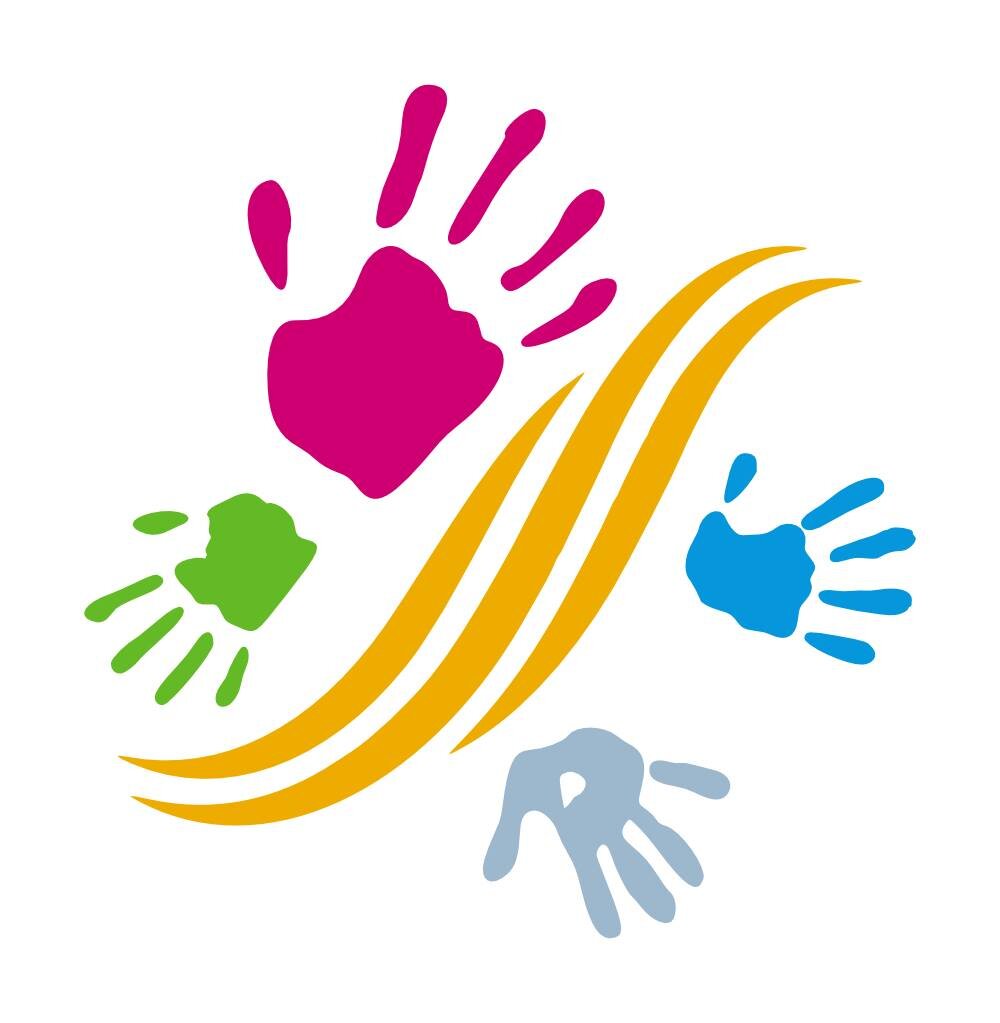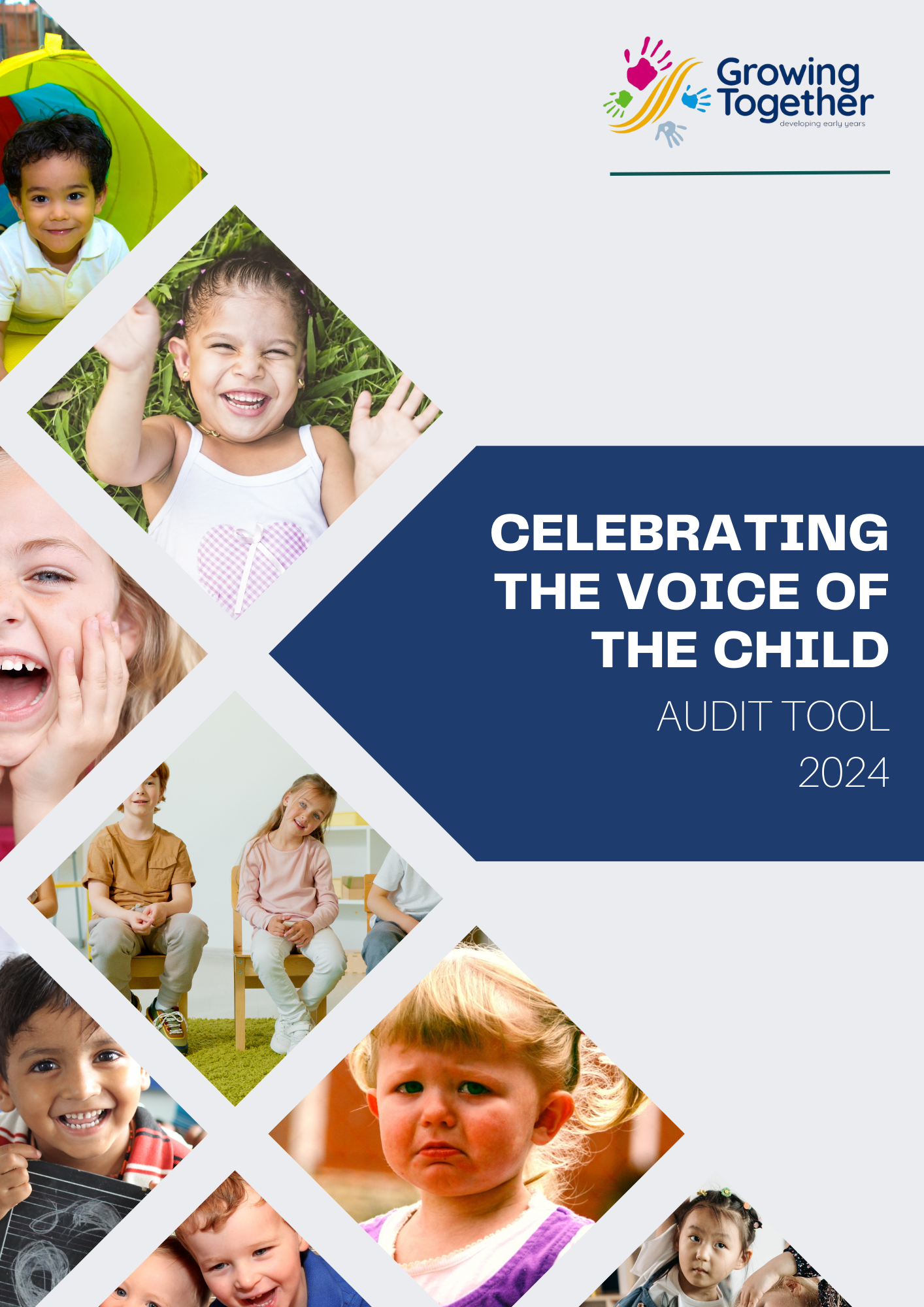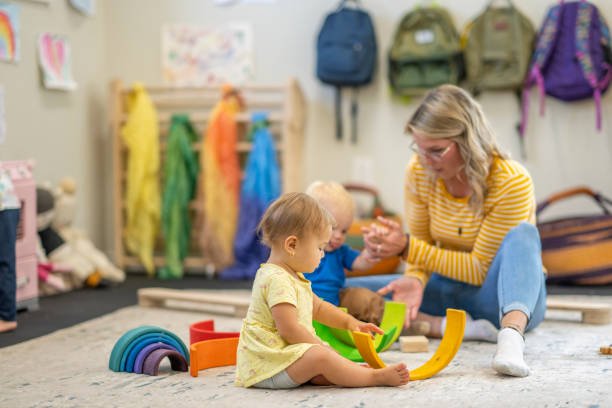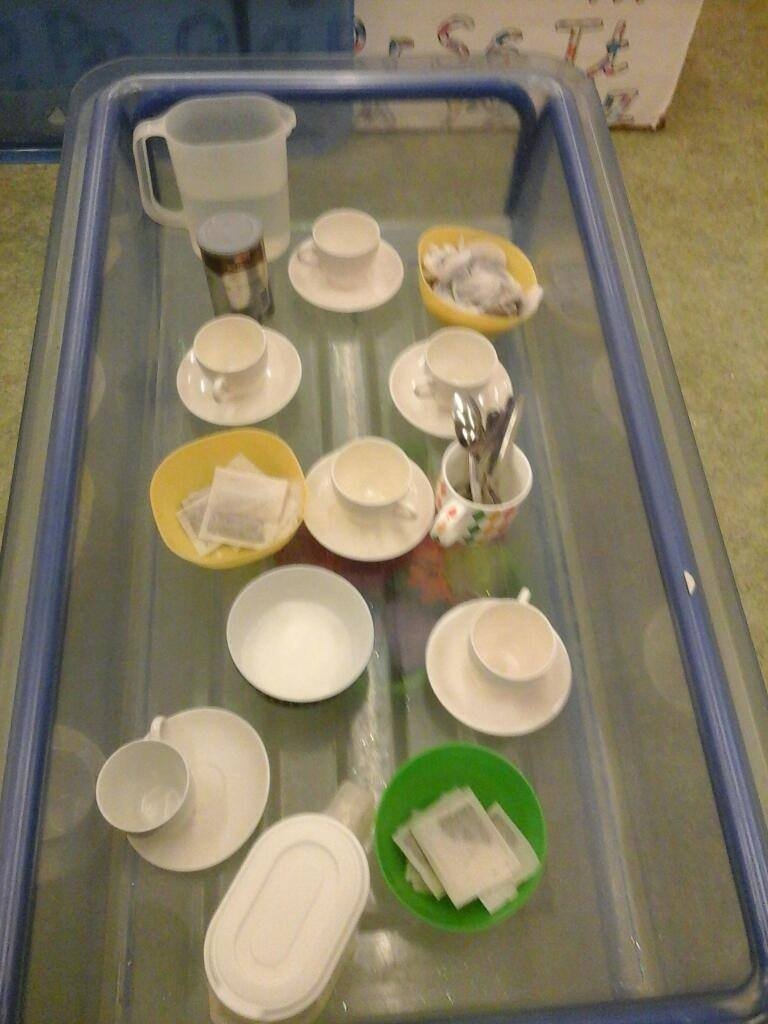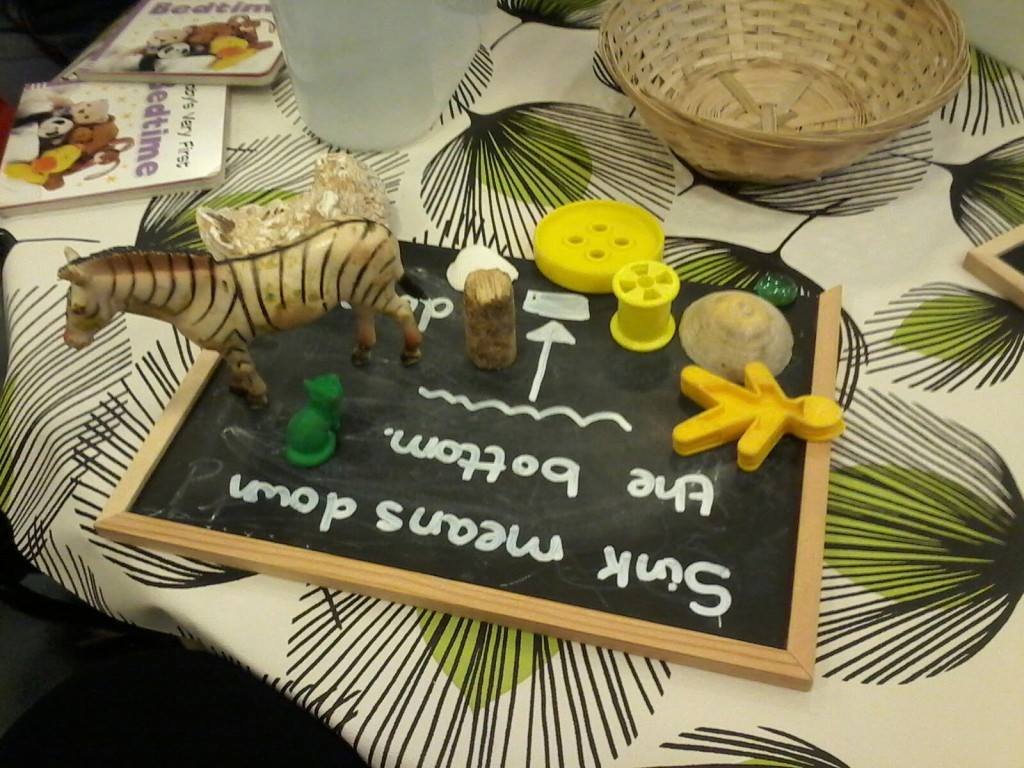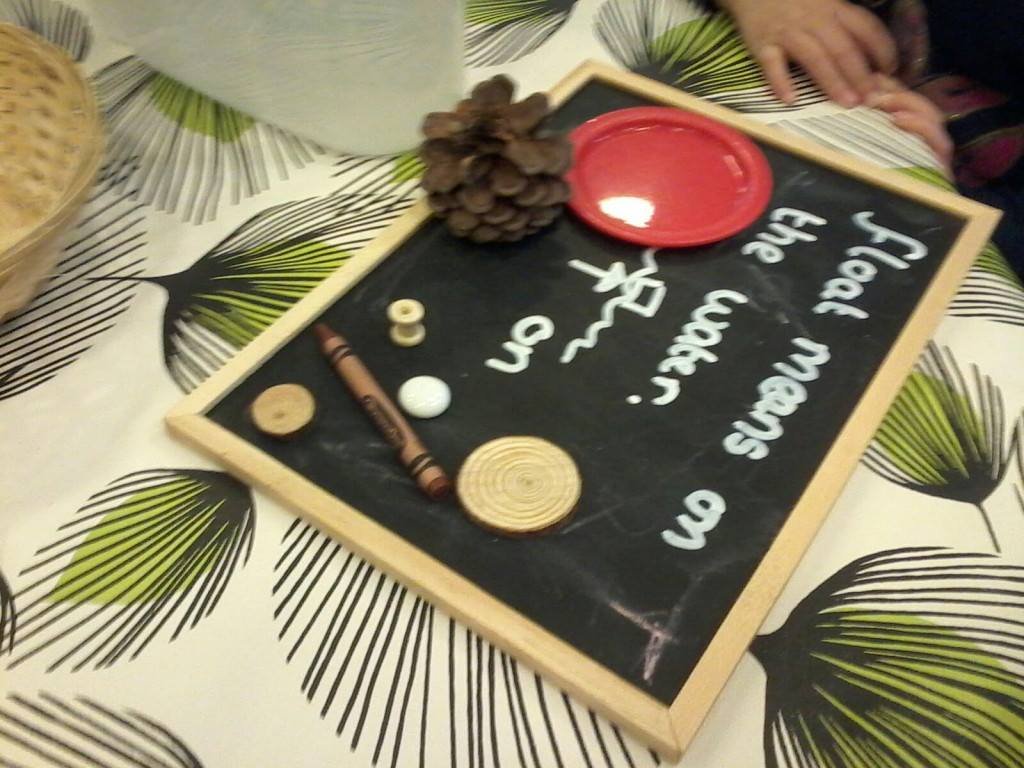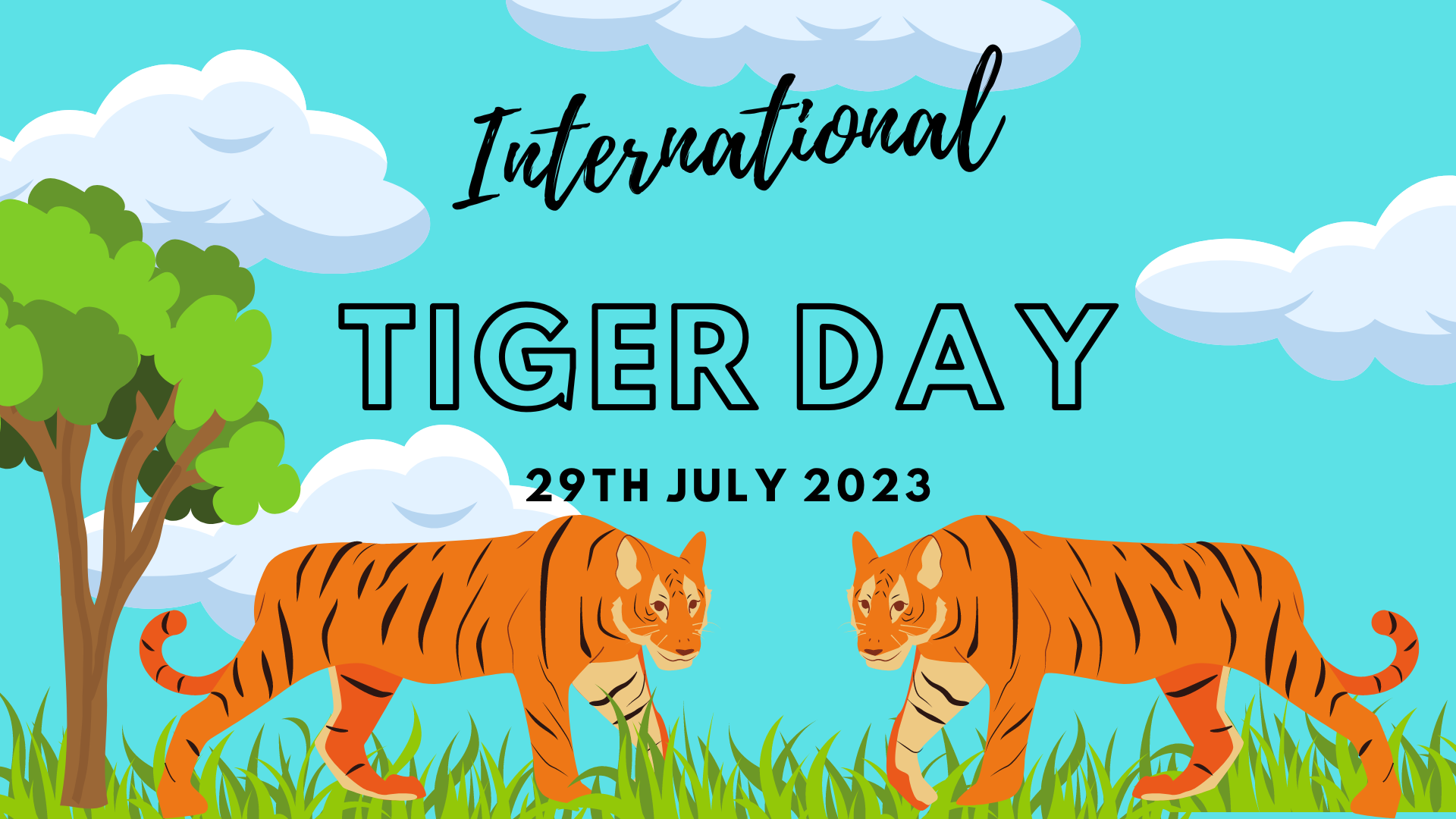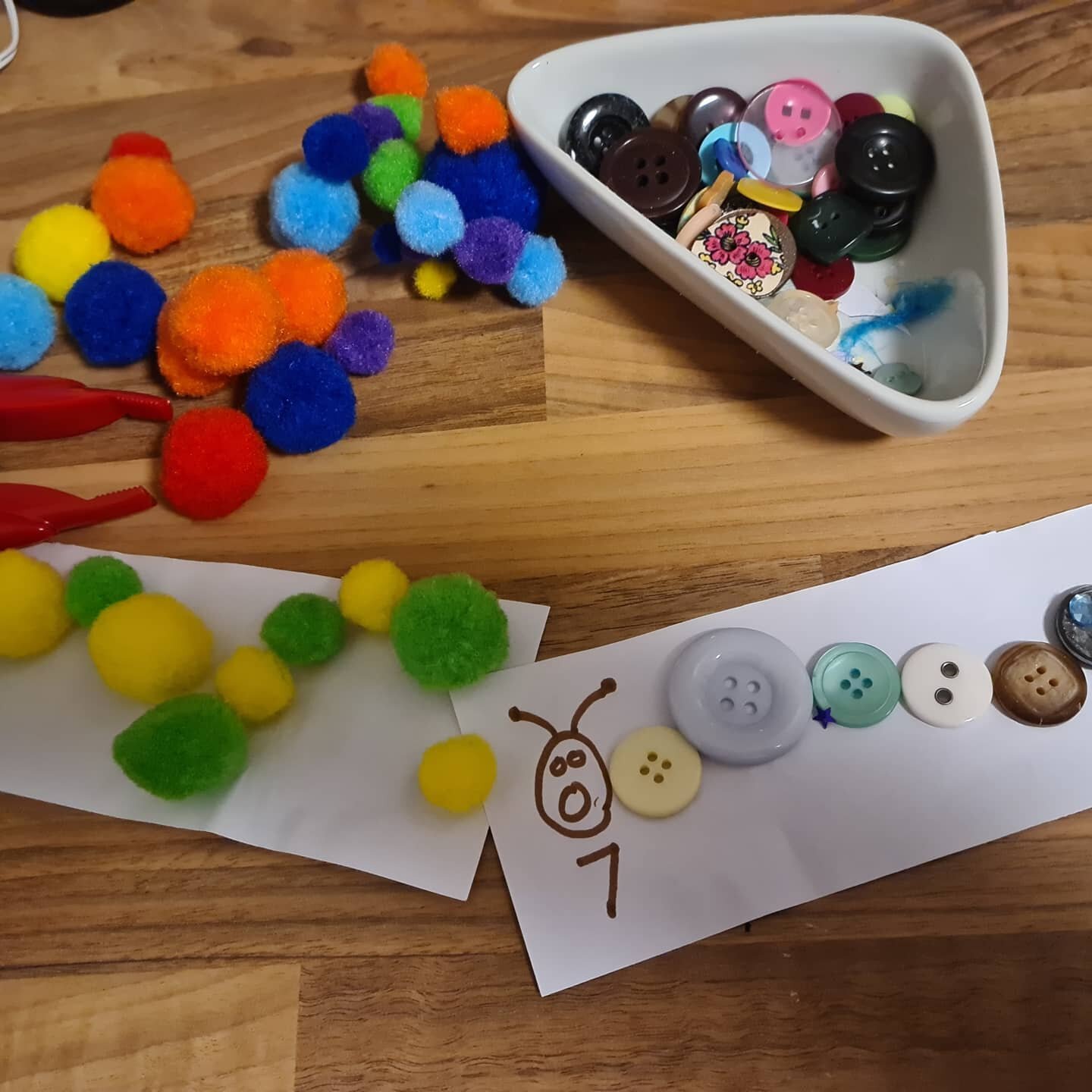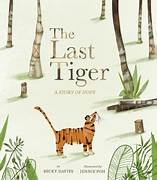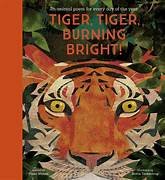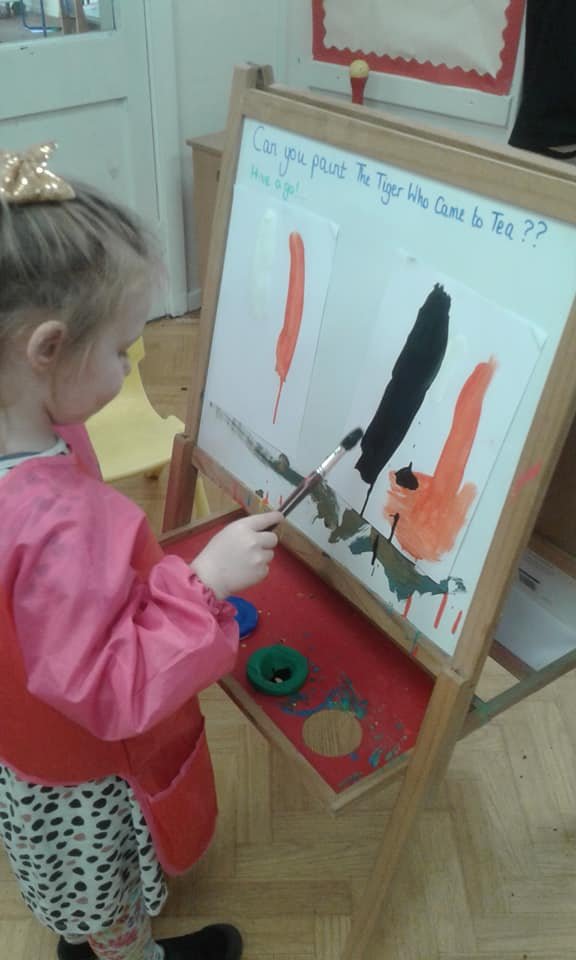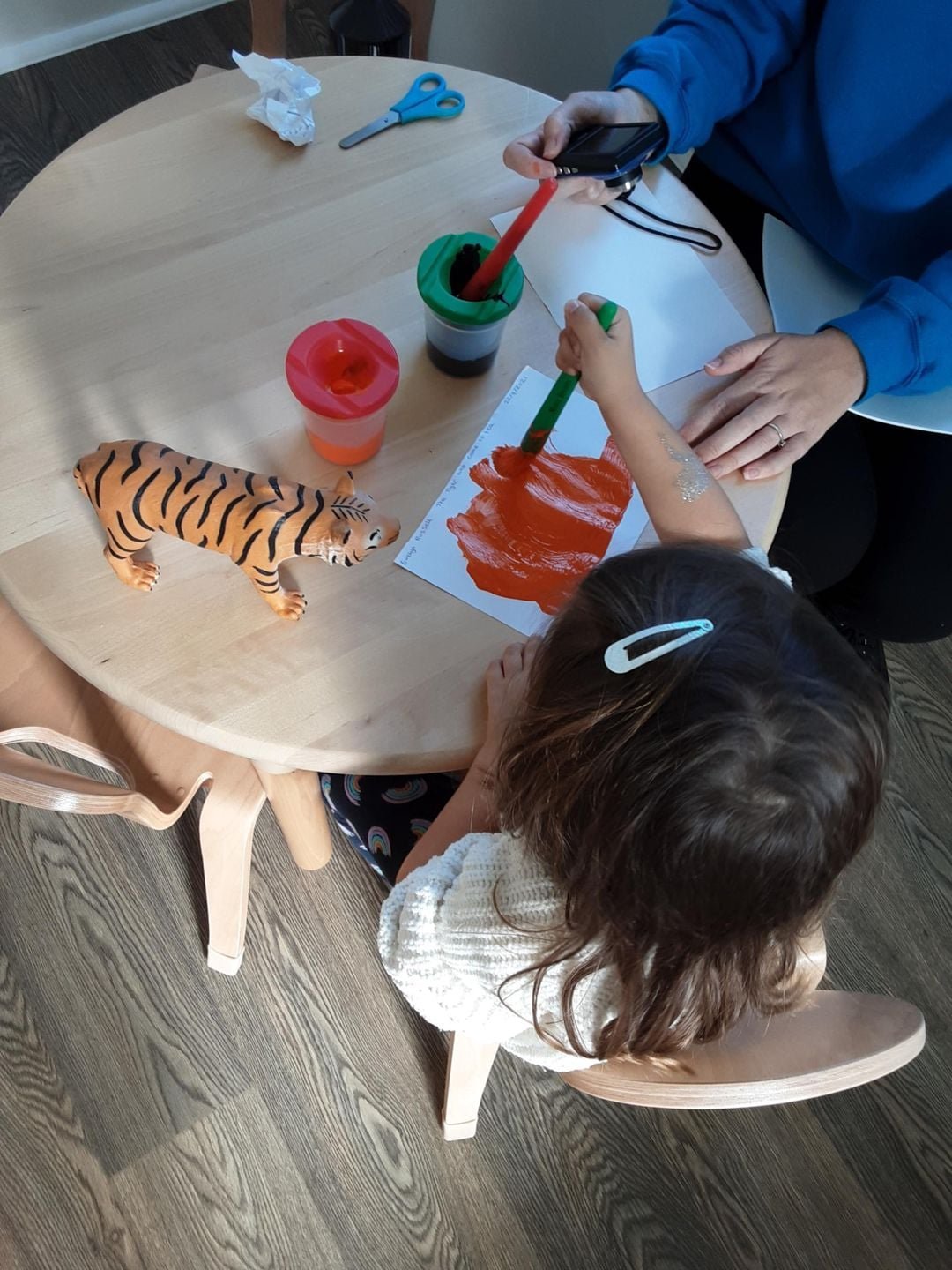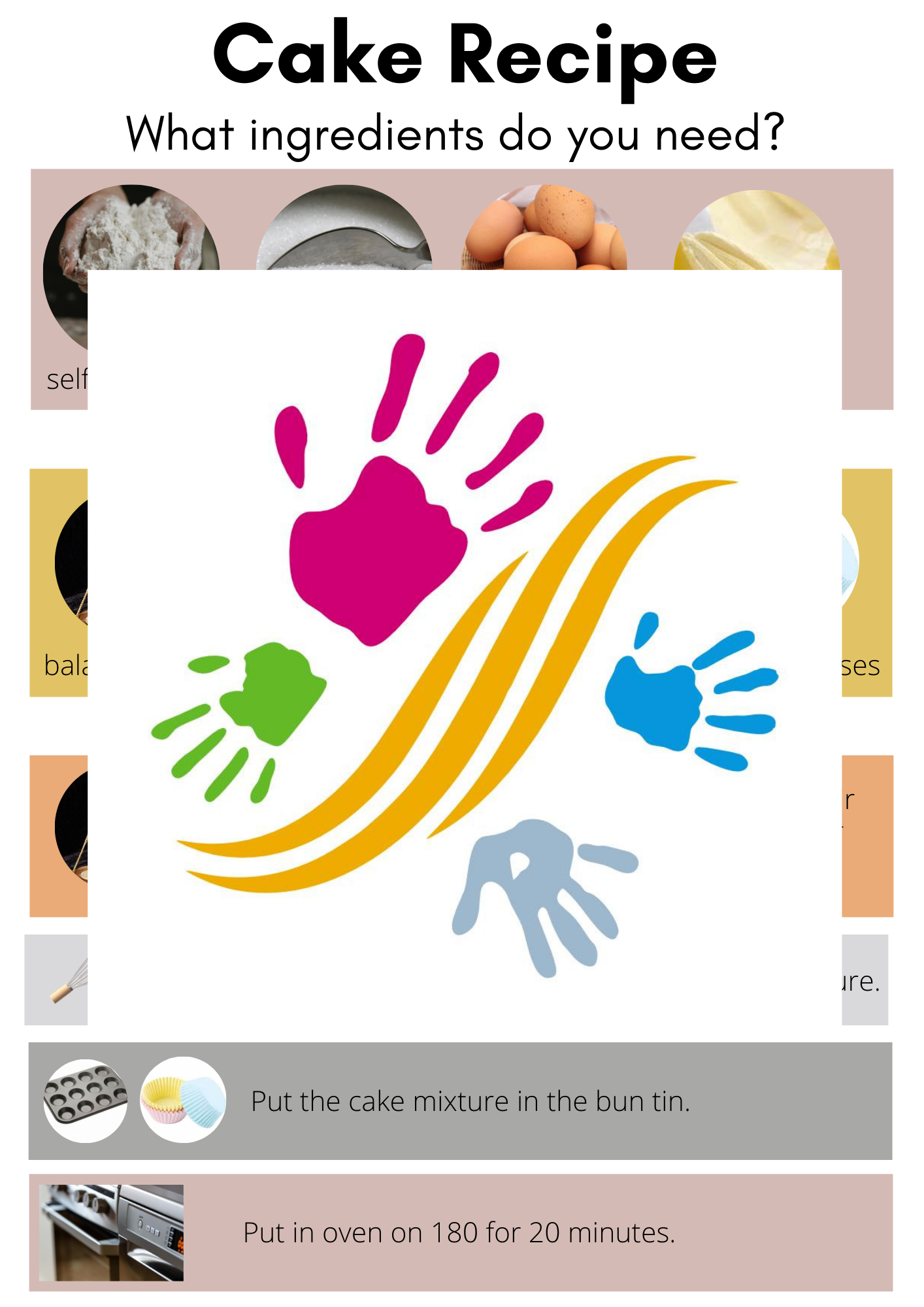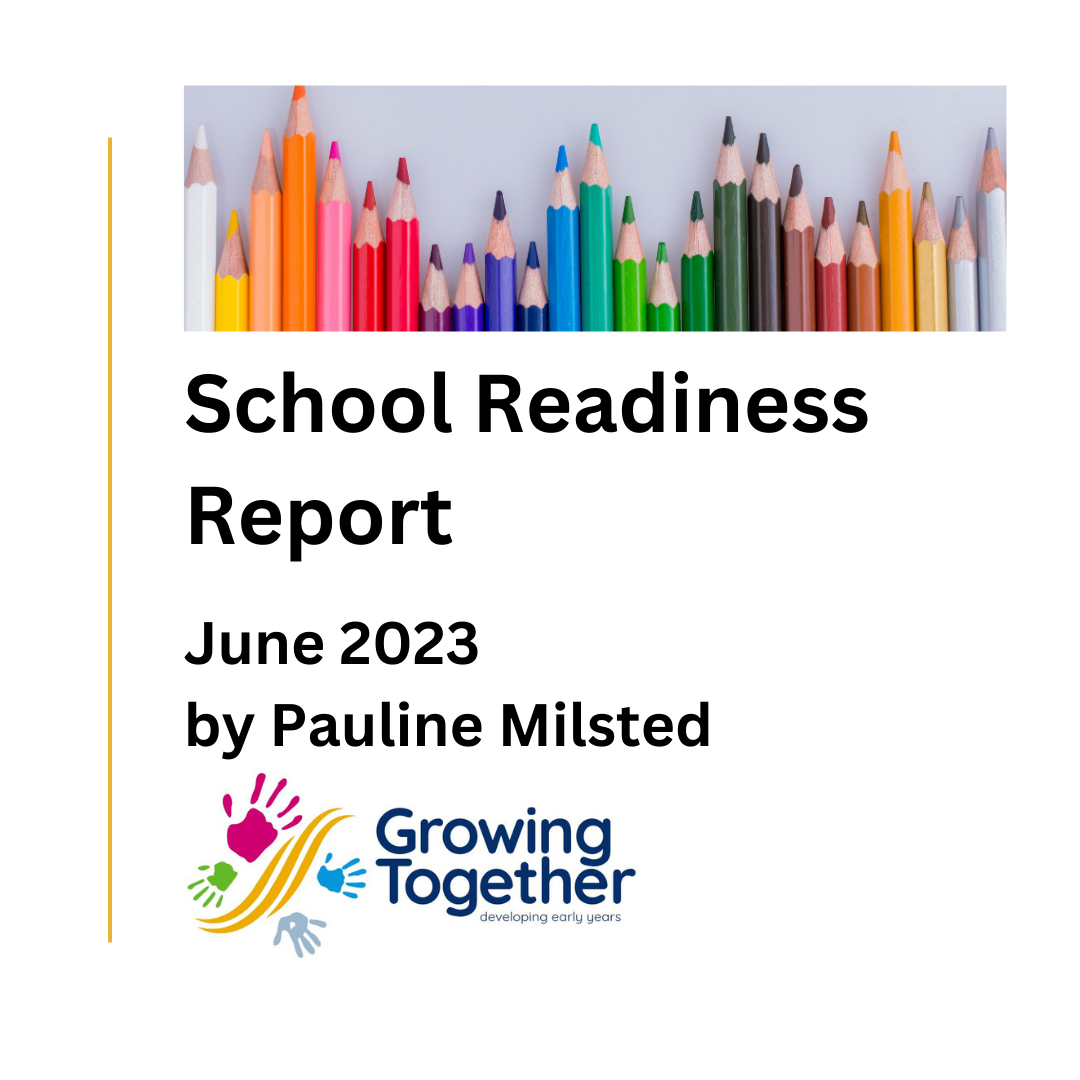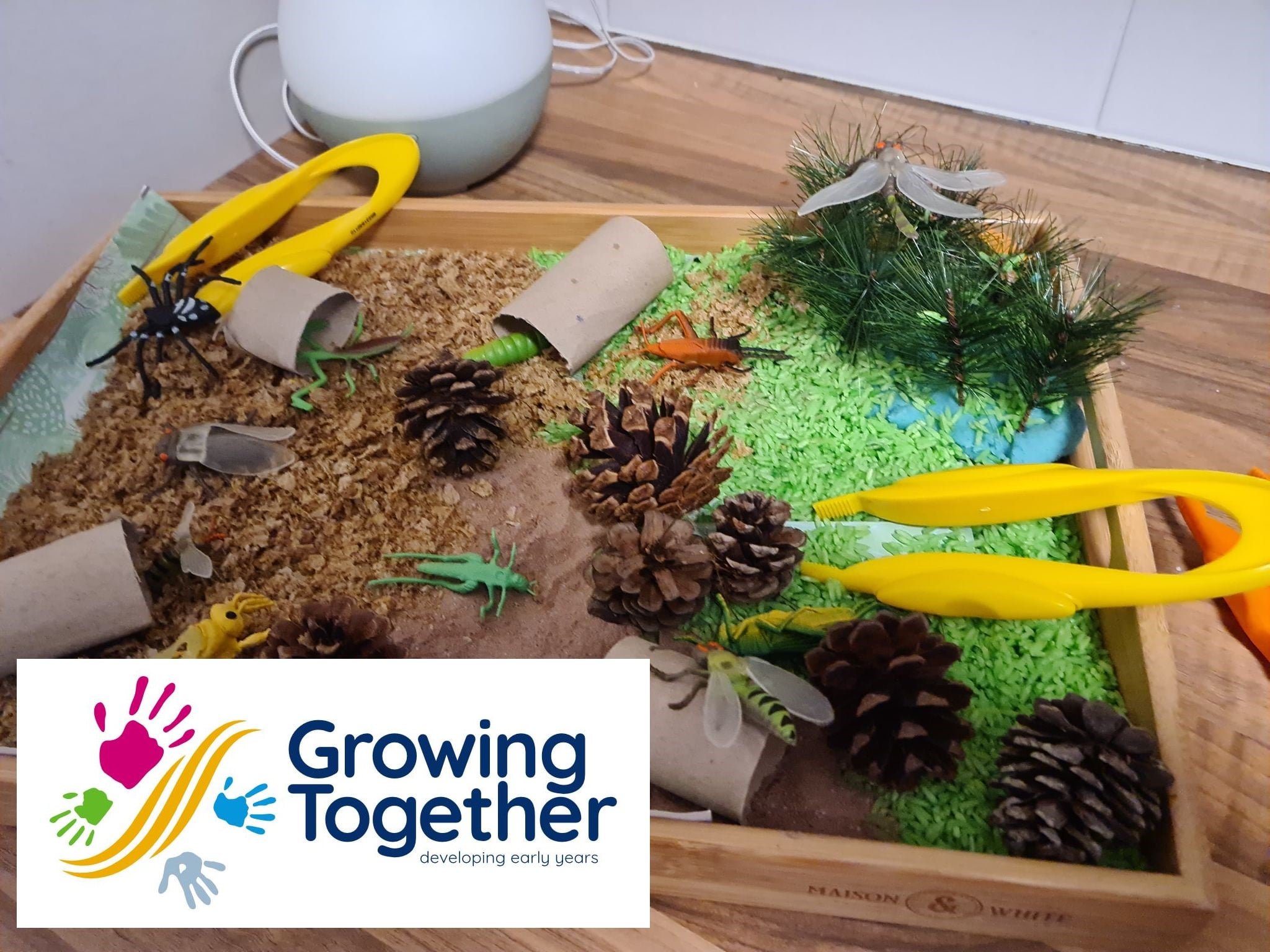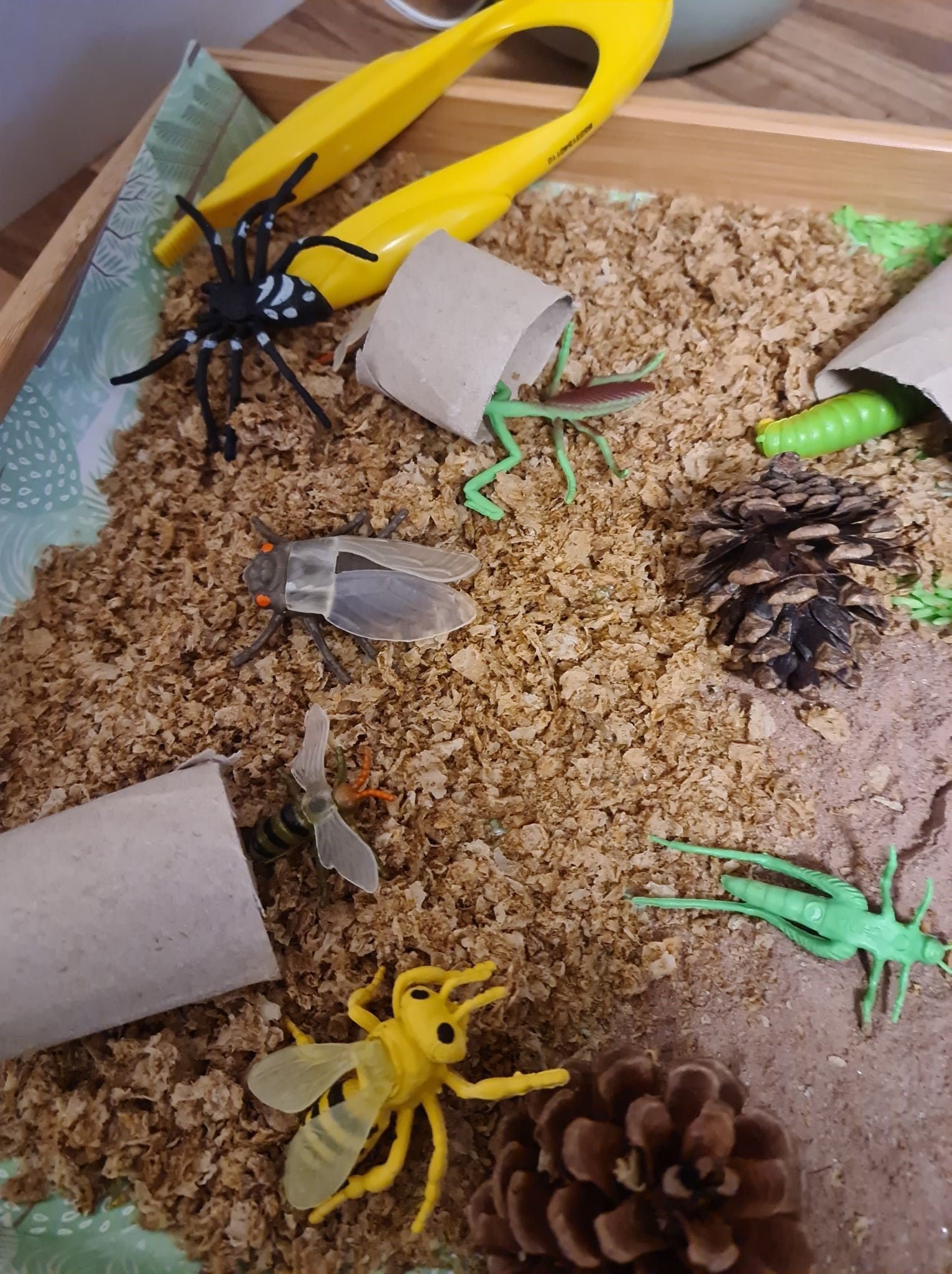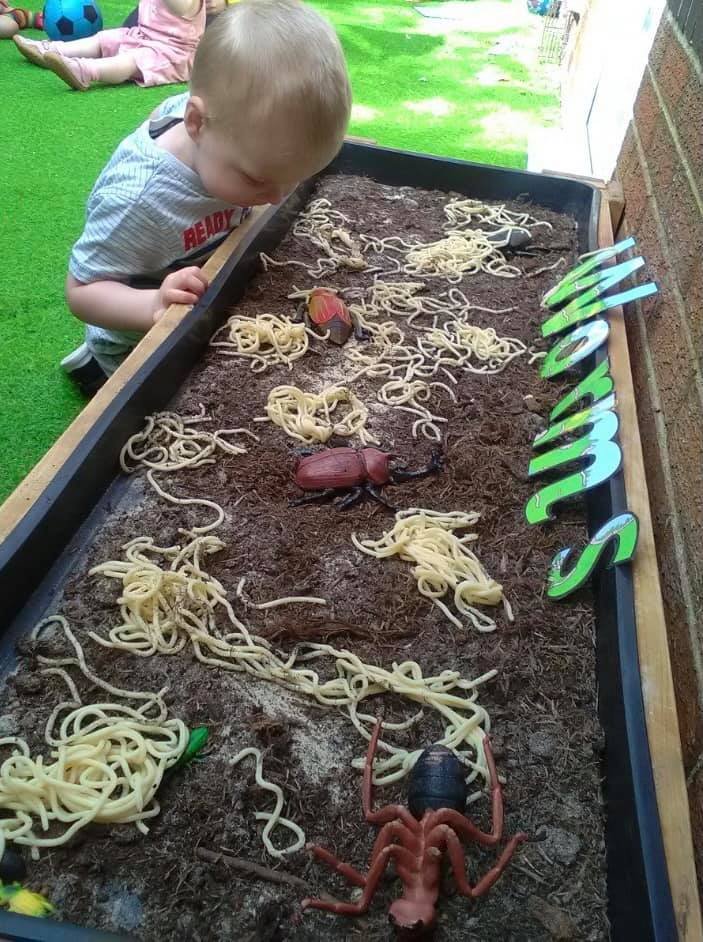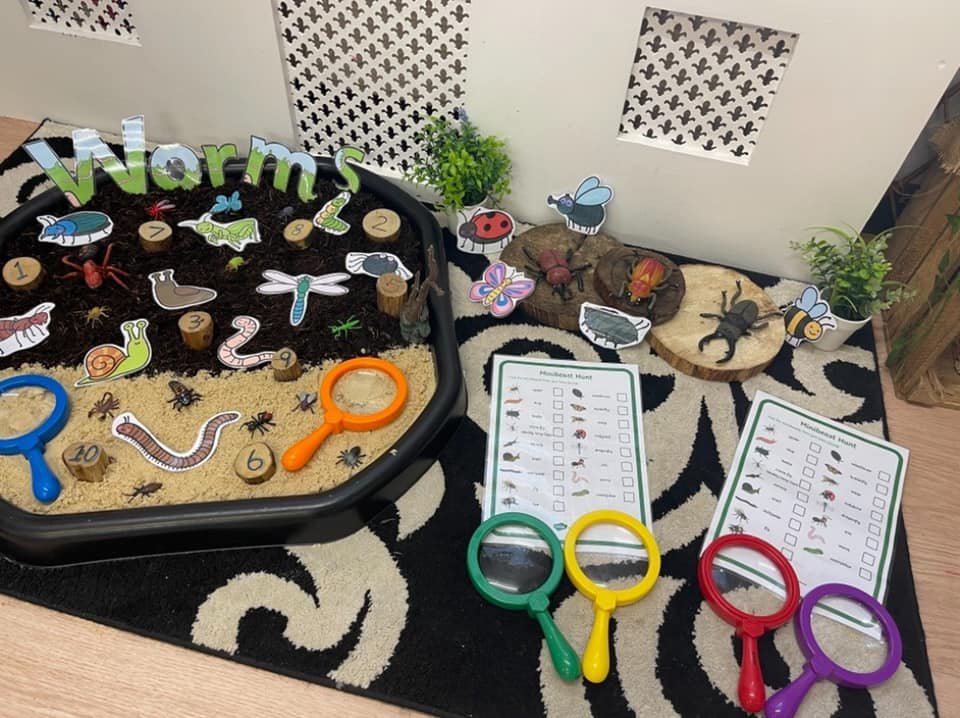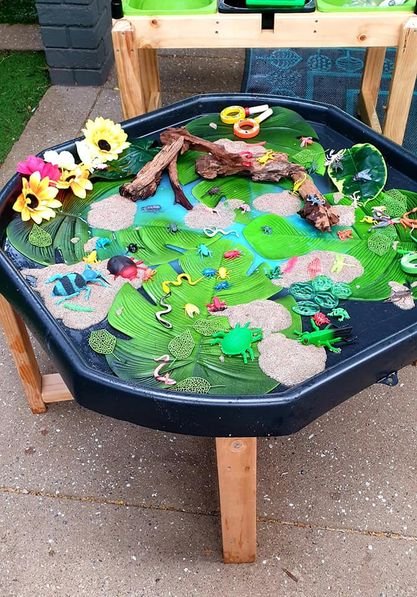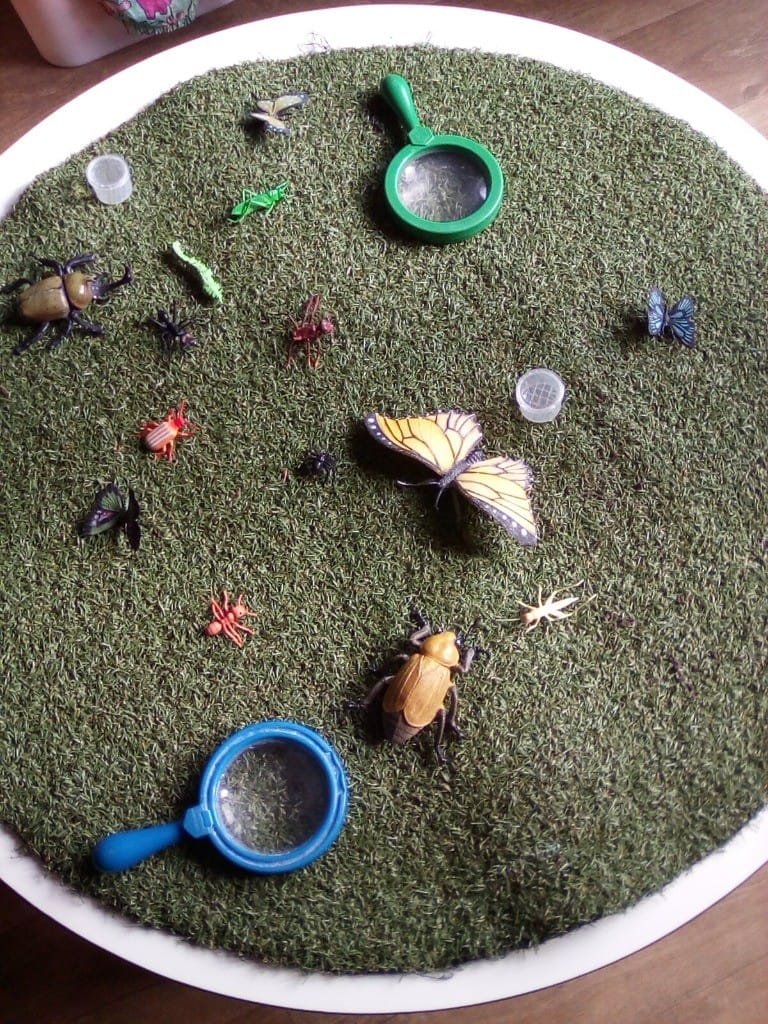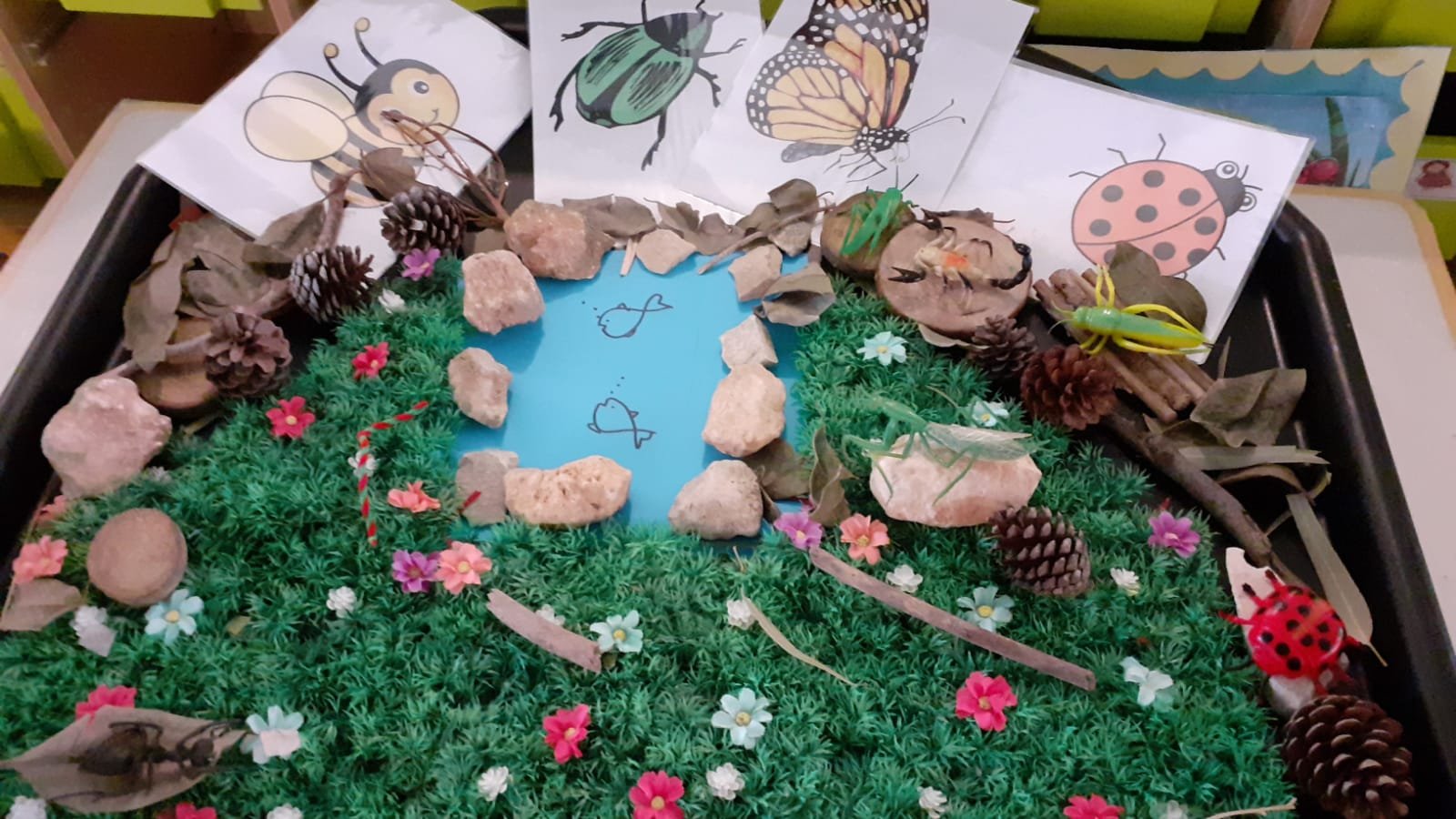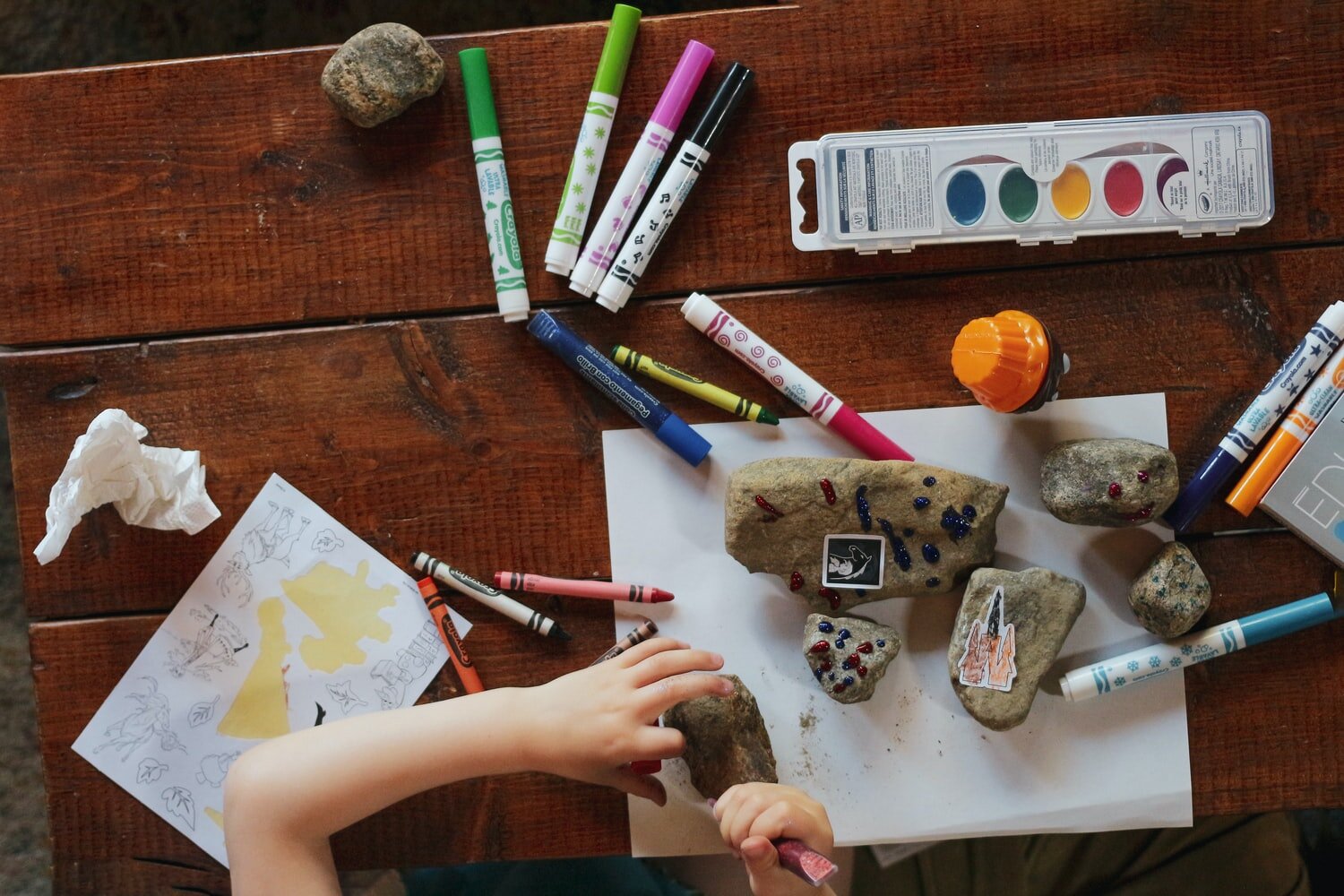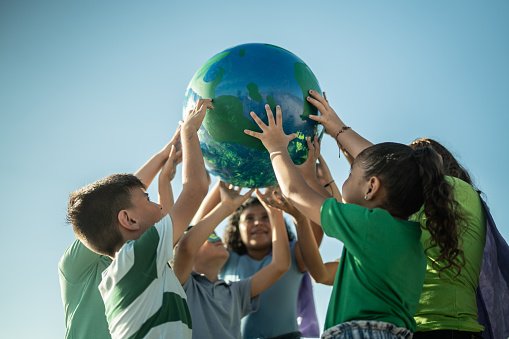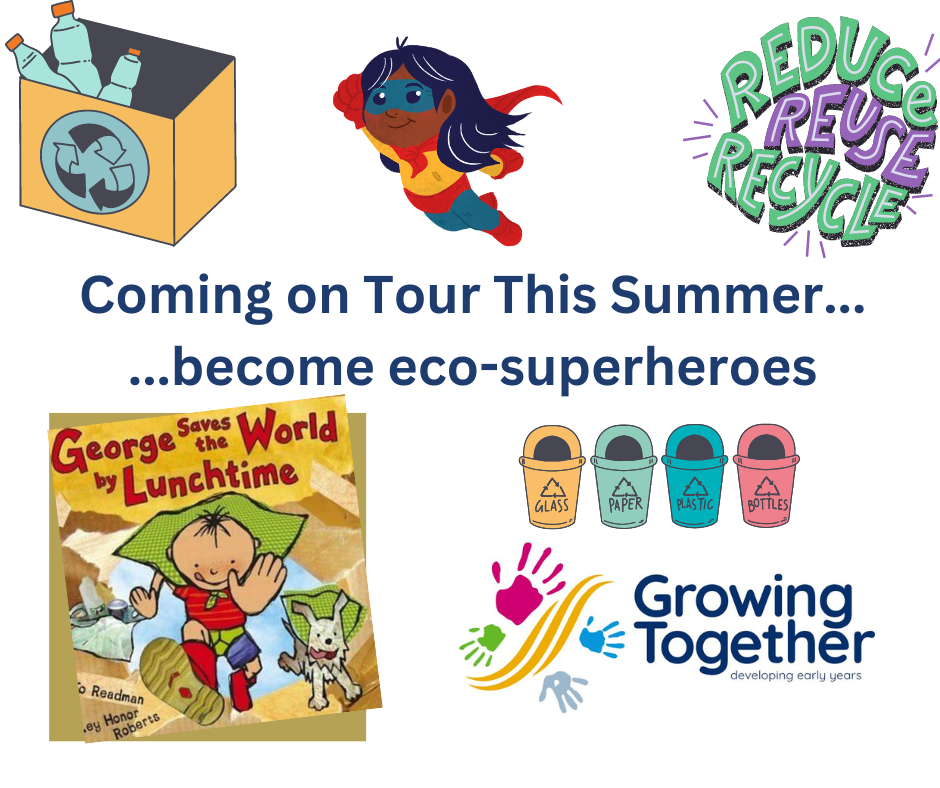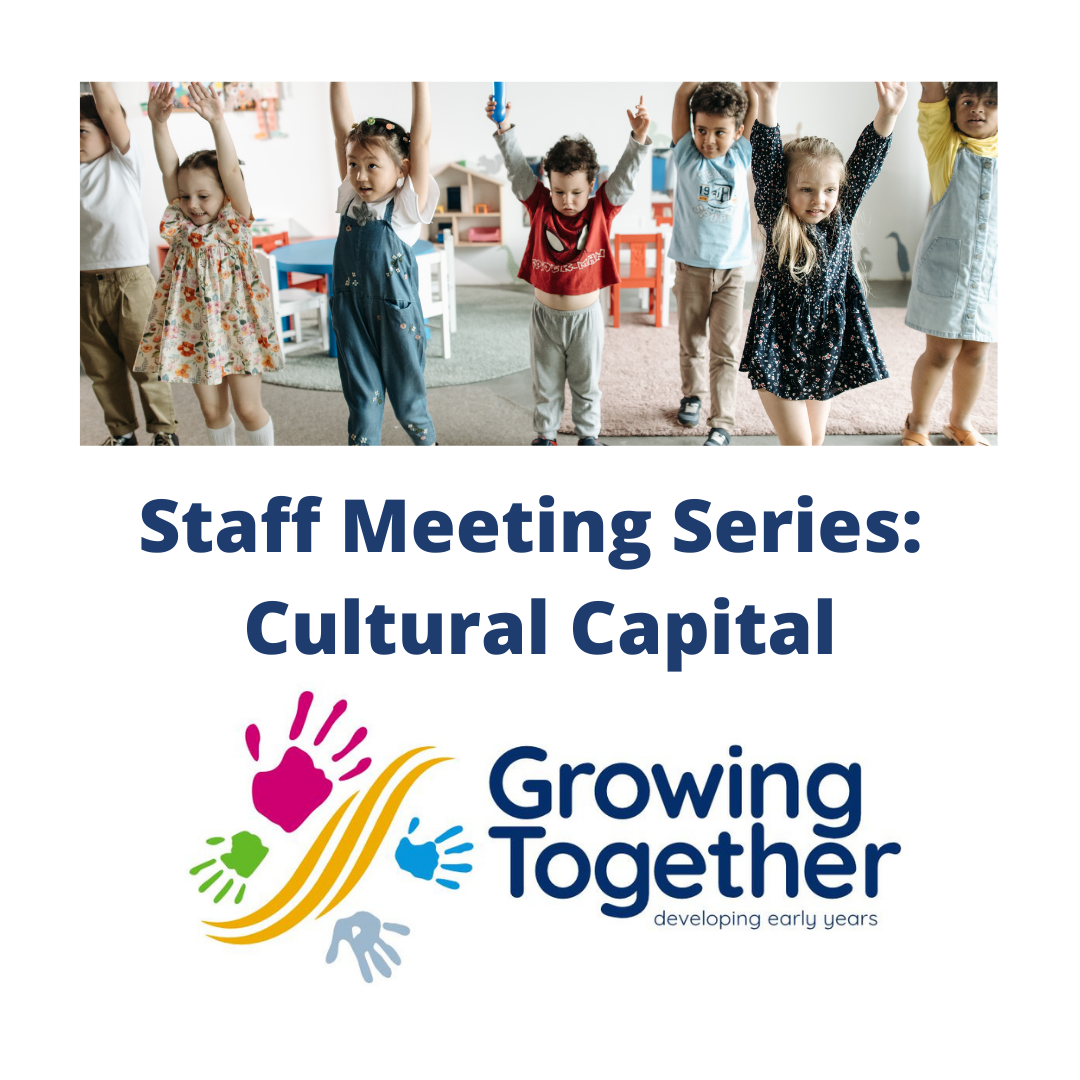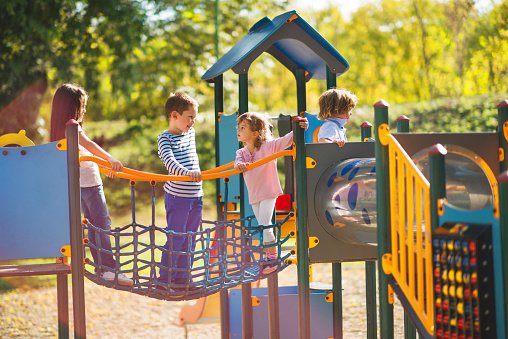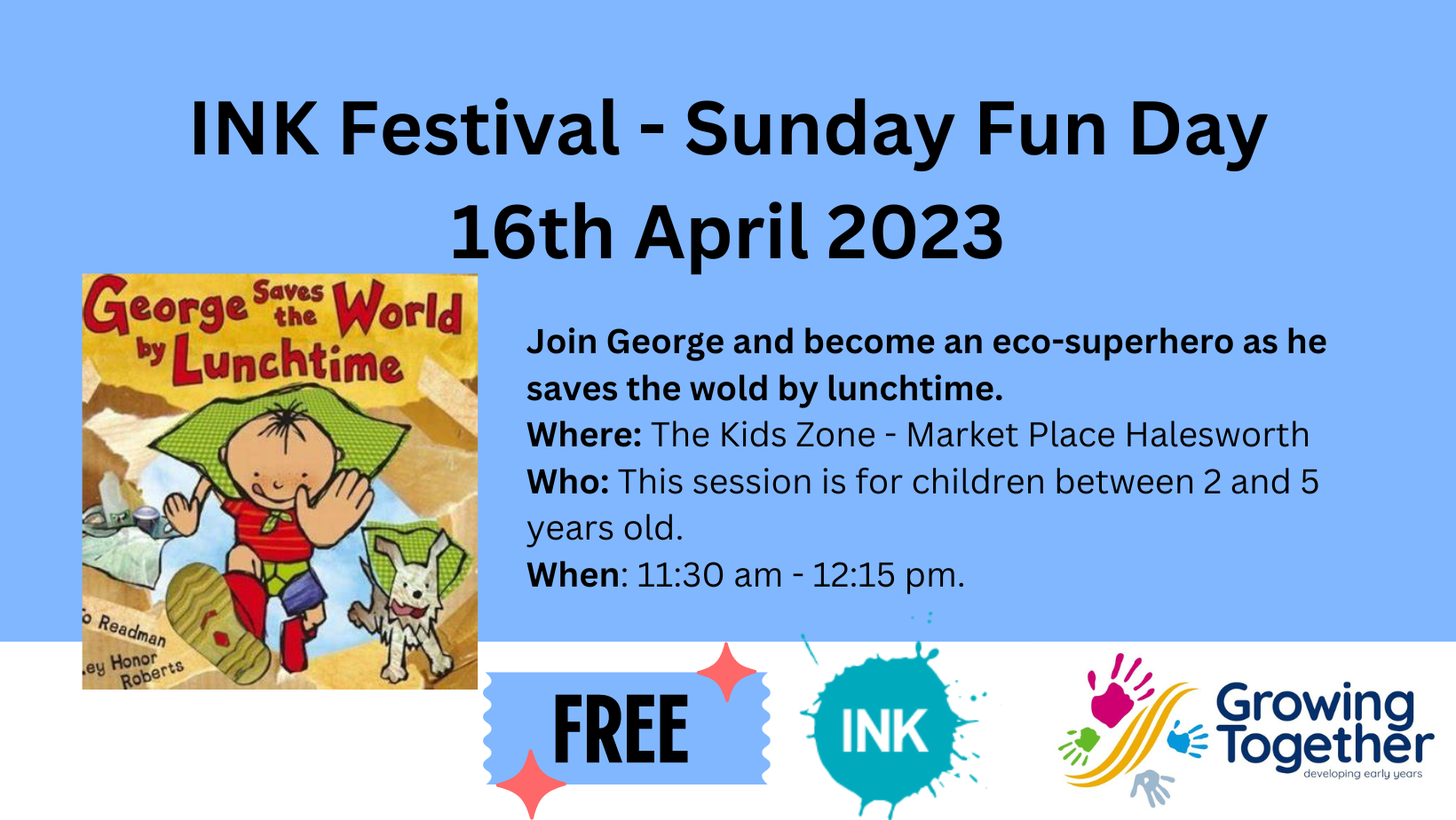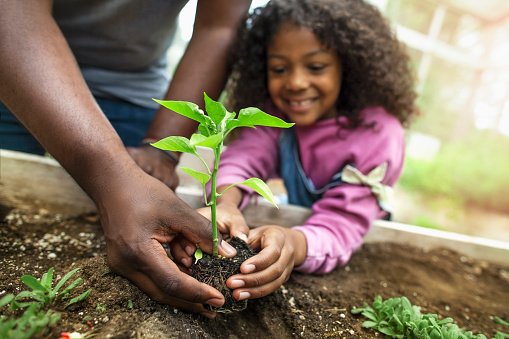What do we mean by the phrase ‘listening to the voice of the child’?
The phrase voice of the child is often used in educational settings, health and social work, to describe the valuing of children’s input and contribution to decisions, things that matter to them and outcomes. The voice of the child is more then listening to the spoken voice of children; listening is when we physically hear what others have to say. A quick google search of the dictionary definition of listening refers to listening as the tuning in and hearing sound or the act of paying attention to someone or something you can hear.
The phrase voice of the child is often used in educational settings, health and social work, to describe the valuing of children’s input and contribution to decisions, things that matter to them and outcomes. The voice of the child is more then listening to the spoken voice of children; listening is when we physically hear what others have to say. A quick google search of the dictionary definition of listening refers to listening as the tuning in and hearing sound or the act of paying attention to someone or something you can hear.
Maybe the term active listening would sit more comfortably with us as a term for fully embracing the voice of the child. As after all, active listening is making a conscious effort to really listen and understand what someone is trying to share with us. It goes beyond the act of just hearing, but implies that we are trying to look for the intent, the meaning, the clues – almost like a detective behind what they have said; to truly be present and understand. Through, healthy relationships that show concern and care, positive open-body language, by limiting our interruptions or opinions, but rather just listening and being open-ended in our responses as we engage with the children.
Although, active listening is a part of understanding the voice of the child. It is not the full picture of understanding and valuing the voice of the child. We connect with the voice of the child in a variety of ways through, spoken and non-spoken language, body language, behaviour, arts, play and many other ways. Perhaps, therefore it is important to acknowledge we hear the voice of the child in a multitude of ways; but also, it is probably beneficial to unpick what we actually mean by the voice of the child. What is it that we are actually tuning in to…?
The following definition of the voice of the child taken from the NSPCC (2024):
The term "voice of the child" refers to the real involvement of children in expressing their views, opinions, and experiences. It includes both verbal and nonverbal communication and goes beyond simply seeking their views to actively including them in decision-making processes.
Similarly, Gwent Safeguarding states:
The voice of the child refers not only to what children (including those who are preverbal and non-verbal) say directly but to their behaviour as a whole. Facilitating the child’s voice involves developing relationships and creating environments in which children feel comfortable and confident sharing their thoughts and experiences. It also means making sure that children’s views, opinions, and preferences are sought and listened to when decisions are made which impact their life.
Both of these definitions share that the voice of the child is, us facilitating ways in which we can actively listen, tuning in to and observe children to hear and respond to their wishes, desires, thoughts, experiences and opinions. Using this in a way to support their learning and development, to inform practice that impacts on their lives, decisions that are going to impact them. It is interesting that the Gwent Safeguarding definition discusses how facilitating children’s voices is through the development of relationships and through the creation of our environments. Something that we are not too dissimilar with in the early years.
When we look at the Early Years Foundation Stage (EYFS), we have four overarching principles the Unique Child, Positive Relationships, Enabling Environments and Learning and Development. The unique child is essentially an extension of the voice of the child, when we think about the unique child, we are thinking about being child-led, about understanding individual children – their behaviour, interests, stages of developing, culture, live experiences. And then producing positive relationships and an enabling environment that fully supports this wonderfully unique child; so that we inevitably see learning and development.
An interesting thought as we explore the voice of the child in the early years. During January and February 2026, we are doing a new blog series on the voice of the child. Please do check out our blog posts each week as we explore different topics around exploring the voice of the children, including things such as top tips, question and answers and much more. Or head over to our socials at Growing Together Early Years for more content.
The power of starting with a question in the Early Years
Children are naturally curious. Piaget often referred to children as mini-scientists. All our children have questions inside them that they love to ask and are naturally interested in the why and how things work or happen in the world around them. As practitioners we are often trying to help children to make connections between the different pieces of knowledge that they are obtaining.
Children are naturally curious. Piaget often referred to children as mini-scientists. All our children have questions inside them that they love to ask and are naturally interested in the why and how things work or happen in the world around them. As practitioners we are often trying to help children to make connections between the different pieces of knowledge that they are obtaining.
Piaget often referred to this process as schematic learning and how we develop schemas of knowledge. These are the up-to-date ideas, knowledge and information that we hold about the world around us. Often in the early years we talk about schemas as the way in which children make sense of the world around them, because we see repeated actions in their play. For example, a child within the trajectory schema will be exploring throwing, often drop things from a highchair, explore the movement of themselves and objects both vertically and horizontally. This is the way that their brains are making connections and learning about the all-important world around them.
As a constructivist Piaget spoke about the process of accommodation, assimilation and reaching equilibrium as we build on our schemas of knowledge about the world around us. I often think of schemas as boxes of knowledge/information. When we are assimilating these boxes (schemas) it is changing the information that we already have, whereas accommodation is creating a new box (or schematic structure) of information to build with because something does not fit in with our pre-existing ideas. This then help’s us to reach a status of equilibrium, where there is no conflict between previous and new pieces of knowledge and information.
Tuning into children’s questions that they have about the world around them and how things work, is a fantastic way of exploring connections with young children. Whether that be questions that they have verbalised, such as, “Why is a tiger different to a cheetah?”. Or it is discovered through our careful observations of children’s learning and development that leads to supporting children’s enquiry-based learning through our careful interactions and enabling environments.
For example, we have noticed that Tommy has been sat with the clipboard and the toy cars and is placing the cars at the top, watching them go down and saying “wow!”. We might extend this to support more child-led learning, for example, adding in different materials to make ramps e.g. pieces of wood or cardboard. We might add non-standard units for measuring etc. But we are following the child’s interest and lead throughout the activity.
Our tips for creating an environment that encourages questions
Creating an environment where questions are encouraged, can be challenging. It can be so easy as educators or professionals wanting to jump in with one of the answers, or expect children to have an answer. My top tip to you is to model open-ended questions and statements. “I wonder why the smaller car went faster then the big one?” Or to think through problems aloud, (sometimes referred to as think aloud strategies); where we give a verbal dialogue of our observations. For example, “Wow! That car went really fast! It went faster then the bigger car. Maybe, I will try again and see what happened!”
Our second top tip is to create an environment that has a lot of open-ended resources. By this we mean resources that have multiple purposes or functions, that children can explore and play with in different ways. This is going to promote problem-solving and natural curiosity as children play. Resources that don’t have set outcome, meaning we are giving children the opportunity to develop their own ideas.
Our final tip for creating an environment that encourages questions, is to have the children’s voice at the centre of it. What are their interests? Can we see that physical in our environment and through the interactions we have? What intrinsically motivates our individual children and gets them ticking? For example, Ellie loves messy play and exploring mixing poster paints together and doing handprints – we are going to add to the environment powder paints, colour charts and water pots. To encourage exploring of consistency, how to make different colours and shades and so on.
A time where we’ve seen the power of starting with a question to support a child’s development
Case Study – How do we make a boat?
Several years ago, we were doing the story of Chinese New Year in one of my settings. The group of children at the time loved to use small world animals and puppets to retell a story. This, developed into them wanting to make a raft for some of the animals to cross the river, like in the story. So, the question was posed, how do we make a boat?
We didn’t give the children the answer, we supported them as they raided the art junk modelling resources to see what they thought would work to make a boat. We experimented initially putting different items into the water tray to see what would float (a suggestion from a child). Before a group of children settled on using a cardboard box, they spent time working together cutting sticking and making the shape they wanted.
We then tested our idea putting the cardboard in the water tray and adding plastic animals to see what happened. We observed for some time and talked about our observations, the animals made it sink slightly, they got wet feet. As the cardboard got soggy it didn’t really float anymore. Perhaps, we should try and cut up a plastic milk bottle. Maybe, it needs slightly round sides, because boats aren’t completely flat.
When they came in the next day we tried to make a boat with a milk bottle; it initially kept flipping. And we talked about and watched a video on buoyancy and then we tried again until they had perfectly made a floating boat with small world animals on it. I share this because that one question of how do we make a boat? Opened a whole spectrum of learning, resilience, perseverance, and enquiry. We could of easily of tried to jump in with an answer, looked at it technically, but we would have missed something that was vitally important. Self-discovery, the power of investigating a question for ourselves.
We hope that you’ve enjoyed reading our blog. Do let us know in the comments if you would like us to write more about encouraging curiosity in the early years.
5 Ways to Enhance Your Mud Kitchen this Autumn
Autumn is a wonderful season, full of so many learning opportunities for children as they connect with nature. This blog posts explores 5 ways you can easily enhance your mud kitchen this autumn to make the most of the season. Autumn provides us with many treasures that can make it fun as we explore, play and learn in the mud kitchen.
Autumn is a wonderful season, full of so many learning opportunities for children as they connect with nature. This blog posts explores 5 ways you can easily enhance your mud kitchen this autumn to make the most of the season. Autumn provides us with many treasures that can make it fun as we explore, play and learn in the mud kitchen.
1. Add autumnal loose parts to the mud kitchen
Autumn provides lots of natural loose parts that can provide open-ended learning opportunities for children as they use their imagination in play. Here are some examples of things you can collect:
Acorns
Conkers
Different types and colours of leaves
Twigs and sticks
Chestnuts
Helicopter seeds
Fir Cones
A top tip for displaying them is to put them in open bowls or baskets so that the children can see what is inside.
2. Add balancing scales
Balancing scales are a great addition to the mud kitchen. Supporting children to develop an early mathematical understanding of weight and making comparisons; without needing to have developed their numerical understanding yet. Providing lots of opportunities for children to develop a rich mathematical language alongside peers and adults support learning and developing. And with all your autumn treasures you will have lots of things to compare of different weights, shapes and sizes to encourage children’s critical thinking and problem solving.
3. Mud kitchen recipes
Support children’s early literacy and mathematical development through having some special mud kitchen recipe cards designed for using in autumn. These cards have been developed and presented in different ways to support children in phase 2 or 3 phonics; and early mathematical skills e.g. number recognition or counting practise.
4. Seasonal vegetables and Fruit
Add seasonal vegetables, such as pumpkins, butternut squashes, crab apples and blackberries to the mud kitchen. Alongside safety knifes so that the children can explore cutting them up and adding them to their recipes.
5. Embrace the rain and dampness!
Along with warm autumn sunny days, we can also experience some lovely very damp and wet autumn days. Consider add a water butt or some kind of vessel that can collect the rain water each day (remember to empty at the end of the day to avoid legionnaires). And jugs and cylinders so that children can begin to measure, and mix in lots of water in their play.
10 Top Tips for Helping Children to Settle into a New Academic Year
With September just around the corner and the summer nearly over, we thought we would share our top ten tips for helping children to settle into their new class or room this September.
With September just around the corner and the summer nearly over, we thought we would share our top ten tips for helping children to settle into their new class or room this September. Whether you have completed visits to other settings, home visits, all about me books, or settle sessions. Or feel like you haven’t quite done enough yet. There are still practical things that we can do in the first few days to help children to settle quickly into the new year.
1. Make sure that all children have a named peg (or photo on a peg) for their first day to help them feel settled and like they belong.
2. Set-up an activity or guide them to an area of the room based on what you know about their likes and interests. For example, on the get to know you teacher day, Amelia’s mum said she loves to play with babies at home. On her first day make sure that the babies are out in the role-play area for her to play with.
3. For children who have English as an Additional Language make sure that you know keywords in their home language or have pictorial cards to help them communicate. For example, toilet, home, snack, food, drink. To ensure that they are able to communicate their basic needs with you.
4. Spend time in the first few days establishing the routine with your children. Use a visual time table to help the children know what is coming next in the day.
5. Try and ensure the same person if possible greets them in their first week, offering consistency and a familiar face.
6. Take time to agree class or room rules alongside the children, giving them ownership for the space as co-owners. Not an adults space that they are stepping into.
7. Spend time with children 1 on 1 and in small groups to help establish good positive relationships early on. For example, it might be sharing a book together or sitting and drawing together.
8. For children with special educational needs or disabilities, ensure that you have planned and prepared as a team how you are going to meet their needs. If they need additional support with tasks - what will that look like? Who will lead this?
9. Ensure that you have an environment, resources and interactions that promote emotional literacy. For example, emotion resources, opportunities to talk with children about how they might be feeling. Some children may not have the vocabulary yet and might need resources to help them communicate with others there feelings.
10. Get the parents to send in a photo from home of something that the children have done over the summer holiday’s. This can be a great talking point and then can be displayed or made into a book of our summer holiday’s.
What are your top tips for helping children to settle into a new room or class this September? We would love to hear them.
Raising a Generation that is Emotionally Literate
“He is sad, because the happy one hit him. And there are sad clouds above him! Cos that is what sad feels like! Grey clouds above you!” John Aged 4 years.
In recent years we often speak about the importance of emotional literacy and learning from a young age to become emotionally literate. Emotional literacy can be defined as an ability to be able to identify, share, understand, develop empathy; and talk about our emotions (Sharp 2001). With the growing understanding and theoretical ideas around emotional literacy, we see the value to children’s development, self-confidence, self-worth, well-being and indeed the necessity of becoming emotionally literate so the future generation fully succeed and reach their full potential.
For a few months now I have had a little example, knocking around in my head that has given me lots to think about on the topic of emotional literacy, how far we have come and what does this look like in young children. I was participating in some painting with a couple of children who were painting happy and sad faces; completely child-led this was not an adult designed activity or outcome of painting! None the less we were identifying and talking about what they were feeling. We were even talking about what might be making them sad or happy. For example, the boy is sad because there is a monster in his bedroom. Even though we were already having this amazing conversation, I remember, being taken back by J’s (age 4) response to, “tell me about your picture”. I never expected such a profound and articulate response that many adults I know may struggle to express.
“He is sad, because the happy one hit him. And there are sad clouds above him! Cos that is what sad feels like! Grey clouds above you!”
Wow! Right, this is emotional literacy, knowing what feelings are but also developing an ability to express what that emotion feels like to us ourselves. But it is even more, there is a next step to emotional literacy that goes beyond identifying, showing, empathy and talking about emotions. This is a great first step and we do a lot of it in the early years, through our enabling environment and positive relationships. For example, we often have picture books that label emotions with young children within the story area. Or us ourselves as part of our pedagogical approach will say things such as, “I wonder how you are feeling?”, “You look very sad. When I am sad, everything feels heavy”. These are discussions that skilful early years practitioners often have. Supporting children through, open questioning, modelling language and giving them space to explore their emotions in a non-judgemental space.
However, beyond this there are other elements to emotional literacy. Claude Steiner (1979) was one of the first theorists to talk about emotional literacy and he identified 5 elements to emotional literacy. These were:
· Knowing your feelings,
· Empathy,
· Managing your emotions,
· Repairing emotional problems,
· Developing emotional interactivity.
I personally, love this model for breaking down the different aspects of emotional literacy and how the different elements work alongside one another. With the addition of what do we do beyond knowing our feelings, which traditionally has been a massive focus of Personal, Social and Emotional Development (PSED) in the early years. Over the next coming weeks, we are going to use Steiner’s framework of the elements of emotional literacy and break them down and look at them in relation to the first 5 years of children’s lives. What does that element look like, but also how can we support our children through our curriculum and pedagogical approach.
References:
Sharp, P. (2001) Nurturing Emotional Literacy. Oxon: Routledge.
15 Water Play Activity Set Ups
Water play is a fantastic way of supporting children’s development and learning that is fun, exciting, and engaging for children. It also does not have to be elaborate and can be done on a budget. This blog post contains 15 simple water play activities that are easy to set-up in an early years setting or even at home.
Water play is a fantastic way of supporting children’s development and learning that is fun, exciting, and engaging for children. It also does not have to be elaborate and can be done on a budget. This blog post contains 15 simple water play activities that are easy to set-up in an early years setting or even at home.
1. Add sponges and loofahs to water play – This activity is great for developing those muscles in their hands that is crucial for early writing. It also provides the children with a different sensory experience.
2. Add different size containers and bottles from the recycling bin – This is a great way to develop hand-eye coordination as they practise pouring from on container to another. Children will also be developing a simple understanding of capacity.
3. Water balloon painting – Fill water balloons with coloured water and throw them at a canvas or sheet of paper. Great for exploring colour and making marks and developing their gross motor skills.
(Example, of a tea making tray from my own experience. )
4. Have a tea party – Set up a cup of tea tuff tray. Have cups, saucers, teapots, milk pots, sugar bowl and teaspoon and teabags. Great for supporting early mathematical skills, hand-eye coordination, understanding of measuring and capacity e.g., half water half milk.
5. Add tubing and guttering to water play to explore movement – Adding tubing and guttering as loose parts for children to explore and arrange how they like can support problem-solving. It will also really engage those children who are in the trajectory schema and are interested in the movement of themselves and other objects.
6. Splat the sound – Write sounds on the playground floor. Fill up water balloons and get the children to say the sound as they splat it. To adapt it for phase one phonics you can have a picture and you need to do the sound it makes, e.g., tick tock for a clock.
7. Add water animals – Add animals to the water tray to support children’s small world play and development of imagination. You could die spaghetti green and use it as seaweed, add stones etc for scenery.
8. Float or sink – I personally love to use a plastic see-through cereal container for floating or sinking. As it helps to illustrate to the children floating and sinking well, as it is much clearer to see sinking goes down to the bottom and floating means sitting on top of the water. Collect a different range of objects. Support children’s STEM skills encouraging them to make predictions, talk about their observations and share ideas with others.
9. Painting with water – Is a mess free way of exploring large scale mark-making. Whether it be on the outdoor walls, fence, or flooring. Think about allowing water painting on different surfaces and angles, e.g., under an outdoor table, laying on the floor or painting on a fence as this will support the development of those all-important elbow pivots and gross motor skills. You can also add different size brushes, rollers, add natural paintbrushes e.g., lavender on the end of a stick or sponges.
10. Potion mixing – Have a range of different pots, pestle and motor, spoons, different coloured water, flowers/greenery, collected petals and have fun mixing potions. Fantastic for developing children’s imagination and creativity as they think of ideas and develop their own interests. Rich in mathematical learning, and a great sensory experience.
11. Bathing toy babies – This is a lovely activity for children to extend on their role-play. As they bath wash and learn to look after their babies. Extending it with having towels and clothes ready to also dry and wash their babies.
12. Paint them, clean them – This is always a firm favourite especially for children who are in the enveloping schema (who like to paint a lovely picture then cover over their carefully painted picture). Simply have different items they can paint, e.g., the tray below has vegetables, but it could be plastic animals or anything of their interest. They get to paint them and then have a bowl of water and clothes next to it, so they can then wash them afterwards.
(Photo taken at Brakey Woods Parent and Child Nature Group)
13. Syringe and pipette play – This is fantastic for supporting fine motor skills, and for developing an interest in the movement of water. You can also add small piping to learn about force and movement through the tubes.
14. Coloured water – Enhance the mud kitchen with different coloured water as the children mix and make their wonderful mud creations.
15. Uh-oh there are holes in the bottles – This is a great one for younger children who are developing their problem-solving and curiosity. Simply collect lots of plastic bottles clean them out and add holes in different places and sit back and watch the children work it out.
International Tiger Day
International Tiger Day happens on the 29th July 2023. It is a chance to celebrate Tigers, and educate around conservation and natural habitats. This blog post explores ways early years settings can get involved in this day.
What is International Tiger Day?
International Tiger Day is a global celebration that happens every year since 2010, to raise awareness about tiger conservation and natural habitats. People around the world celebrate International Tiger Day in a variety of ways, from information sharing too big events. As a company we are passionate believers that children are our future and that we need to teach them about the incredible world that we live in from a very young age. This is why we are supporting International Tiger Day as a company.
When is International Tiger Day?
International Tiger day is celebrated on the 29th July 2023.
Why Celebrate International Tiger Day?
There are many reasons why people celebrate International Tiger Day and below are some of them:
· In 2010 when International Tiger Day was launched, 97% of all wild tigers had disappeared (National Today)
· To protect endangered species and to tackle illegal poaching (National Today)
· To empower the future generation with knowledge about tiger conservation and natural habitats.
· Because children within their early year’s settings are interested in tigers or animals.
· To teach children about our ecosystem.
Ways of Celebrating International Tiger Day in the Early Years?
Raise money to sponsor a tiger as a setting:
One of the things that you can do as a setting is hold a fundraising event to raise money to either sponsor a tiger a setting or support a tiger conservation project. There are lots of things you can do to fundraise money and below are just 5 ideas:
1. Hold a cake sale.
2. Save 20 p’s in a smarties tube – just send smartie tubes home.
3. Pre-loved clothes sale – ask parents to donate their outgrown preloved clothes and sell them to parents that need them for a donation.
4. Sell produce to parents from the nursery’s allotment or vegetable patch.
5. Have a summer fete with hook the duck, splat the rat and traditional games.
Five of our favourite tiger books:
The Tiger Who Came to Tea by Judith Kerr
Tiger, Tiger, Burning Bright by Fiona Walters
The Last Tiger by Becky Davies
Never Touch a Tiger! By Rosie Greening
That’s Not my Tiger by Fiona Watt
Three activities to go with the story The Tiger Who Came to Tea by Judith Kerr:
Set up a tea-making tuff tray with cups, saucers, milk, sugar, jugs, tea pots, tea bags and coffees. For the children to develop their physical skills and communication and language through imaginative play. It also gives lots of opportunities for natural mathematics through exploration e.g. exploring capacity such as full, half-full and empty. Or counting how many spoons full of sugar you would like.
Have a tiger tea party and make invites for your friends and make some yummy treats such as cupcakes and sandwiches. Through setting up a tea party and cooking/making food with the children you can cover all areas of the early years foundation stage in a fun and interactive way. From problem-solving how many chairs you need around the table, to practising physical skills as they mark-make their invites, pour ingredients or learning to retell what happened in the story. The possibilities are really endless.
Make tiger masks so that you can be the tiger who came to tea. Whilst doing this activity you might want to look and talk about the patterns on tigers, how are they different to other animals? Can you get the toy small world animals out and look closely?
(Photo Credit: Chestnut Nursery School 2021 - The Tiger Who Came to Tea - Tea Party).
Paint pictures of tigers and have a tiger art gallery:
Use photos and toy tigers as a stimulus to encourage children to have a go at painting their own picture of a tiger. Host a tiger art gallery exhibiting all the children’s amazing artwork.
(Photo credits left to right: Queensway Infant Academy and Nursery (2023), Ducklings Nursery at Middleton Manchester (2021) and Monkey Puzzle Day Nursery Loughton (2021).
India:
70% of the tiger population is in India (National Today), so why not do a mini topic looking at India with the children. Here are five inspirational ideas to get you going on a journey to India:
1. Make passports and tickets, as well as setting up a role play airport and catch a plane to India.
2. Use non-fiction texts to find out information about tigers in India and set up a little news station for the children to share the information they find.
3. Look at different maps and globes and find India.
4. Set up a tuff tray of a tiger habitat and have pictures and information to go with it about tigers in India.
5. Share with children the folktale from India – The Tiger Child. You can find a video of the story here.
We would love to hear how your setting celebrated International Tiger Day. Why not leave us a comment below and let us know?
School Readiness Report - June 2023
We would like to say a massive thank you to everyone who participated in our school readiness survey, we could not have written and published our first ever official report from Growing Together Developing Early Years…
We would like to say a massive thank you to everyone who participated in our school readiness survey, we could not have written and published our first ever official report from Growing Together Developing Early Years. As a company we feel that it is important that we give back to the early year’s community, but also that we ground what we do in research, developmental theory and lessons from high-quality practice.
Our school readiness report had 3 aims:
· What are early years practitioner’s perspectives of what school readiness is?
· How many children in early years settings are perceived to be school ready?
· What challenges do children face in the area of school readiness?
Over the coming days and weeks, we will be sharing snippets of our findings from the school readiness report via blog posts and our social media channels. Also, raising interesting comments and thoughts about where to go next with the recommendations and what does the early years sector need. You can access and download the full report for free.
Abstract
This is a piece of explorative research of early years practitioner’s perspectives on school readiness with England. The research found that nearly half of all practitioners felt that 50-74% of their cohort starting school in 2023 are ready to start school. Practitioners discuss that children’s school readiness is impacted by a factor of developmental issues such as delayed speech and language, increase in screen time and the covid-19 pandemic. There are increasing concerns that children’s communication and language development and personal, social, and emotional skills are below the expected level to be school ready; and this has had a detrimental effect on the children who are starting reception class in September 2023.
Building on children’s curiosity of all things creepy crawly
National Insect Week 2023 is a fantastic week to celebrate in early years settings. Children are often curious, mystified and very interested in our creepy crawlies that we can find outside in our outdoor provisions. There are many ways that we can support and build upon children’s interests in everything insect related.
Children are often curious, mystified and very interested in our creepy crawlies that we can find outside in our outdoor provisions. There are many ways that we can support and build upon children’s interests in everything insect related. This blog posts shares lots of ideas and inspiration for anyone who is participating in National Insect Week 2023 or just have insect loving children!
Bug Box Carrier
The Carrier Contains
bug books
bug pots
identification cards
clipboards
notepads
pens
pencils
magnifying glasses
rulers
mini microscope
multilink for non-standard unit measuring
paintbrushes (to be gentle when moving insects)
This is a great resource to create for children on the go, to take wherever they find their creepy crawlies. It also keeps everything together and in the same place so you can easily find things in the moment to follow on children’s interests.
Bug Themed Nursery Rhymes and Songs
Rhymes and songs are fantastic for children’s learning and development and there are lots of insect themed songs out there. Here are one of my favourite nursery rhymes for an insect topic. It is a fantastic song that can incorporate finger play for young children, supporting their physical development, as well as their proprioception and vestibular sense.
Here is the beehive.
But where are all the bees?
Hiding away where nobody sees.
Here they come flying out of their hive.
One, two, three, four, five!
Here is the beehive.
But where are all the bees?
Hiding away where nobody sees.
Here they come flying out of their hive.
One, two, three, four, five!
Buzz up high. Buzz down low.
Buzzing fast. Buzzing slow.
Buzz to the left. Buzz to the right.
Buzz all day but sleep at night.
Here is the beehive.
But where are all the bees?
Hiding away where nobody sees.
Here they come flying out of their hive.
One, two, three, four, five!
Insect and Bug Books
Sharing books with children has a variety of benefits from supporting their communication and language development, extending their vocabulary. Developing attachment and relationships as you share books together. To developing early literacy skills and a love for reading. They can also be a great source of information gathering for young children.
These are five of my favourite bug related books to share with children under five years old.
Insect Tuff Trays
(Photo credits: Images 1-3 from Growing Together Developing Early Years, Images 4 and 5 Happy Feet Nursery Watton, Image 6 My Environment Family Day Care on Facebook 30.09.2021, Image 7 Bear Hugs Nursery, Image 8 Active Learning Childcare).
Tuff trays like the images above can support children’s learning through tactile experiences, promoting sensory placed learning. They can also help to develop their communication and language skills and imaginations as they play and explore in the different trays.
Feed Slugs and Snails
Pop out some cucumber or lettuce out and sit back and observe how snails and slugs eat. You can look closely using a magnifying glass and have bug books close to hand for information. A top tip for when moving bugs/insects is to move them gently using a paintbrush to avoid squishing or hurting them,
Science Experiment - Hovering Butterflies
What do you need:
tissue paper,
scissors,
cotton,
tape,
stapler or paperclips,
magnetic wand.
Instructions:
Cut out small butterflies using tissue paper.
Staple or paperclip one end of the butterfly to the piece of cotton and stick the second end using tape to the table.
Use a magnetic wand above the butterflies. You should be able to get the butterfly to hover below in the magnetic field.
Insects and Clay
Push toy insects into clay, so that you get a nice print of the different insects. You can then leave them to dry before painting and decorating how you wish.
Movement Game
Support children’s physical development and listening attention and understanding through a simple adult-led instruction based game. Ask the children to move like different insects for example, scuttle like a beetle, flap like a butterfly, march like ants and so on. You can also differentiate the game up encourage children to move like an insect in response to different music or instruments. Thinking about what insect does it sound like?
Please note that this blog was originally written for National Insect Week 2023 and updated in 2025.
5 Top Tips for Parents: To help their child be ready to start school.
As a parent or carer, we can often feel a lot of pressure around getting our children ‘school ready’. We might have well intentioned parents, grandparents’ friends, who start conversations with “When so-so started school they were writing their name!”…
As a parent or carer, we can often feel a lot of pressure around getting our children ‘school ready’. We might have well intentioned parents, grandparents’ friends, who start conversations with “When so-so started school they were writing their name!”. As we live in a society that loves to compare and shows everyone’s best lives not their struggles this can often leave people feeling unsure, or like we are not doing good enough.
In our previous blog what is school readiness (read here), we discussed how school readiness is much more then perhaps the societal perceptions that have been held for many years. But actually, it is making sure that children have the underpinning communication and language, personal social and emotional and physical development in order to be ready to start school. So, for example, they can listen and follow instructions, they can express their wants and needs to others, they have good large and small physical movements, and they can play alongside others.
1. Share books – Books are a great way of supporting children’s communication and language development. Also, it can help to create a love for literacy from a young age, is great for supporting personal, social, and emotional development as you bond with your child as you read. Also, books can help to support your child’s listening and attention skills.
2. Sing nursery rhymes – There is lots of research out their showing how fantastic nursery rhymes are for supporting children’s communication and language development. As well as their early literacy development. Meme Fox is often famously quoted for saying that children who know 8 nursery rhymes by the age of 4 years old are some of the best readers at the age of 8 years old.
3. Visit the park – Visit the local park and climb tree, roll down a hill, play on the swings, climb on the climbing frame and apparatus. Or take your bikes and scooters and go for a ride. Children need to have developed their proprioception, vestibular senses, and gross motor skills before they are ready to sit and show control over a pencil.
4. Support your children to dress themselves – Practise doing fastenings for example, zips and buttons on clothes so that children can do this independently themselves. Encourage children to dress themselves in the morning. Teach them how to know which way round they put their shoes on, for example, using a sticker cut in half that they have to match up to get their shoes the right way round.
5. Practise your route to school – Familiarity can help with the transition to school. So whether you will be walking, biking or taking the car practising the route to school and talking about what you see on the way can support children to become familiar and confident with the experience.
School Readiness Series: How Can We Support Children to be School Ready?
So, the big question is what does this look like in reality? What is the support we give our children, so that we help them to be ready with the very best start through our early year’s provisions. We are going to break down the understanding of school readiness into areas, allowing us to discuss practical examples for each one.
Our last blog that you can find here, discussed what is school readiness regarding supporting our children to be ready to start reception class. This blog is going to consider how early years practitioners, from childminders to nurseries or preschools can support children within their care to become school ready. When we are thinking about school readiness, we want children to be confident, resilient, independent and to be managing their own self-care when they start school and children who have a good level of development in the prime areas of development.
So, the big question is what does this look like in reality? What is the support we give our children, so that we help them to be ready with the very best start through our early year’s provisions. We are going to break down the understanding of school readiness into areas, allowing us to discuss practical examples for each one.
Supporting Self-Care
When we think about self-care in the early years we are thinking about those physical skills or actions children develop to look after their bodies. For example, being able to dress themselves, feed themselves or brush their teeth. These everyday life activities that crucial to a healthy body and mind. Self-care is also about learning to look after our emotional well-being to be kind to ourselves and learn to regulate or behaviour and respond to our emotions and what we might do (we discuss supporting emotional well-being later in the blog when we look at supporting PSED).


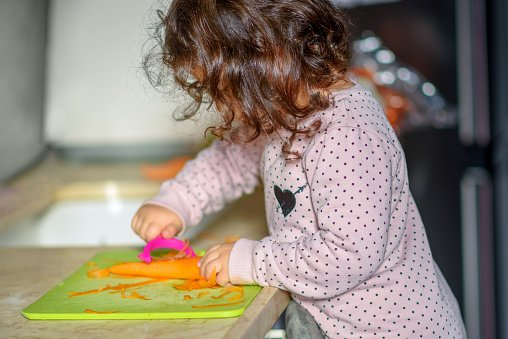
Ideas to support children with their physical skills to support their self-care:
1. Busy fastening boards – that include a range of different cloth fastenings for children to practise.
2. Practise using knife and forks in playdough.
3. Self-service snack and encouraging children to pour their own drinks.
4. Sticker shoe trick to help children put their own shoes on. Cut a sticker in half and stick half inside each shoe, the children have to match it up to put their shoes in the right feet.
5. Cooking activities with children that encourage them to use tools and knifes.
6. Finger gym and fine motor activities, developing the muscles and coordination in those hands.
7. Water play to develop children’s all important hand eye coordination.
8. School uniform dress up – (great for also supporting children’s emotional well-being, as well as giving them the opportunity to practise)
Ideas for supporting children to learn about their hygiene needs:
1. Nose wiping stations.
2. Visuals in bathrooms showing children when they might need to wash their hands and how to wash hands.
3. A curriculum that promotes oral health (see our previous blog here).
4. Role-play, e.g. washing, dressing and looking after the baby dolls.
Supporting Physical Development
When children start school we often have a societal view of wanting them to be able to hold a pencil correctly to form letters. But what we want for our children goes far beyond this, because actually there is so many skills that children need before they are ready to write. For example, we need to have developed our gross motor skills, our shoulder pivots, elbow pivots and wrists pivots. Before we then go on to strengthen the muscles in our hands and fine motor skills. We need to have developed our core-body strength and stability so that we can sit and write. We need to have hand-eye coordination, and developed our vestibular and proprioception sense.
Therefore before we challenge children to form letters and hold a pencil we need to be working on those skills through encourage active play, climbing running, dancing, parachute games. We need to give children the opportunity to explore large scale mark-making such as mop painting, painting with rollers using those gross motor skills. As well as mark-making at different angles in order to develop elbow pivots. We need to roll down hills, squat and listen as we look at bugs and have endless opportunities to be physical within our enabling environments.
Building Children’s Confidence, Resilience and Independence
Starting school is a big transition for most children and they are likely to be feeling a variety of emotions, big and small, good and bad. All emotions are okay and what we want is for our children to be resilient and be able to bounce back from different and difficult situations and show autonomy over their learning. For example, it is okay if I have to wait for my turn on the red bike; because I can apply the skills I have learnt in preschool, such as I can ask someone when they finish to let me know. Or we could use a timer to help us take turns. Also, when children are independent in their learning we see higher levels of motivation and learning, as they take ownership over what they are doing.
So we want to work on building children’s confidence, so that they are willing to have a go, see what happens and develop their own curiosity. This can be fostered through a curriculum and pedagogical approach that is open-ended, child-initiated and that promotes curiosity and enquiry based learning. For example, Harry found a ladybird in the garden and was talking to his friends about it. He looked closely at the dots and wings. This led onto a discussion about where we should put the ladybird and the children use non-fiction texts alongside a member of staff to find out about where ladybirds live and to make a home for it. The children also went on to do more bug hunts and insect related activities.
Personal Social and Emotional Development
By the time children start school we want them to be able to begin to take turns with others. Remember this is a hard skill and sometimes, especially if it is something very important to us, we still may need a little bit of support with sharing. But we want to to be able to share those resources, take turns in games and also in conversations, understanding that is a two way flow of information. There are many games or activities out there that we can do to support children with turn-taking throughout our continuous provision and adult-led activities:
Orchard toys games - orchard toys have a variety of games designed for this age range that are great for promoting simple turn taking.
Taking it in turns to be helpers - for example, snack helpers.
Using timers with popular toys as a resource to help children take turns.
Games such as sound lotto.
Puzzles that children have to work collaboratively together to achieve.
We also want children to be able to express their emotions and share how they are feeling with others, and to be able to self-regulate their behaviour. For example, I know that I am feeling cross, I cannot control this feeling, but I can take a break from my friend or do something physical to help me manage this feeling. This is also, going back to self-care helping children to learn to respond to their emotional needs and to take care of themselves.
Communication and Language Development
When children start school we want them to have the basic communication and language skills to be able to communicate effectively with adults and peers. To be able to listen and follow simple 2 part instructions, to enjoy listening to books and rhymes and join in retelling stories and singing nursery rhymes. We want them to be able to listen and focus on a conversation, staying on topic and following it and to be confident to communicate their wants and interests to others.
There are many ways that we can support children’s communication and language skills, through sharing a range of books or singing nursery rhymes. To making sure that we have language rich environment and communication friendly spaces. For children we have concerns about we can use intervention tools such as WellComm to support their communication and language development. High quality interactions between staff and children are also crucial in supporting early communication and language development. As well as offering a variety of phase one phonics activities that is going to help children to begin to listen, tune in and talk about different sounds that they hear.
School Readiness Series: What is School Readiness?
With last week being the day that expectant parents across the UK find out what primary school their children had been accepted into the term ‘school readiness’ has come back into focus. ..
With last week being the day that expectant parents across the UK find out what primary school their children had been accepted into the term ‘school readiness’ has come back into focus. As schools, nurseries, childminders, preschools, and families get ready for those all-important transitions into reception in September 2023. And teachers in primary schools and families across the UK are helping children to prepare and become ready for their transition into Key Stage One.
School readiness has been a term that has been widely used in the past several years, particularly alongside the focus of concerns that more and more children across the UK are not ready to start school. For example, Watkins (2018) from Save the Children discussed how the UK government claims that 1 in 4 children are not meeting the expected level of development before starting school and how we are already letting them down. This has shockingly increased in the covid-19 pandemic where reception class teachers reported in a government survey that more then half their children were not ready to start reception and 88% of teachers and teaching assistants were having to spend more of their time with children who were not reaching their developmental milestones (Lawler 2022).
So, this leaves us with the question of what does school readiness actually look like? PHE (2015, p.4) defines “School readiness is a measure of how prepared a child is to succeed in school cognitively, socially and emotionally.” Although, it is worth noting that there is no national definition of school readiness and is somewhat a debate of what age group school readiness applies to; is these children starting school in reception or is it getting them ready to begin their journey into the national curriculum and key stage one? (Ofsted 2014). This is before the then criteria differ from setting to setting as to our own pedagogical beliefs, curriculum and what we view as being school ready.
For the sake of this blog series, we are considering what school readiness looks like for those children that are going into reception class in September. Below is an image of page 6 from the document Improving School Readiness Creating a Better Start for London by Public Health England (PHE) (2015). Highlighting their views of what school readiness at the age of 4 looks like and the skills, development, and experiences we are expecting our 4-year-olds to have.
This document is also a very useful document for highlighting the why (intent) behind focusing on school readiness in the UK and the benefits of investing in school readiness to support children’s development, learning and the impact on future outcomes.
Another, popular poster that is commonly used with early years settings is The Road to School poster by Nursery Resources. This poster shares similar skills and attributes that as an early year’s community we are looking for children to be able to do to be school ready. As well as the steps to starting school from PACEY.
Find a downloadable version of this here from PACEY.
To me as an early year’s consultant being school ready is having a good level of development in the prime areas, communication and language, physical development, and personal, social and emotional development. As well as having begun to develop a lifelong love for learning, based in being curious and inquisitive. It is being able to talk about your own emotions and coregulating alongside experienced teachers. It is being independent for example, dressing yourself, feeding yourself, being able to make choices, having confidence to talk to others that are in your class. It is having the basic communication and language needs to listen and pay attention, to communicate their needs and to share ideas and make friends. It is also about have good gross motor and fine motor skills ready for learning. Everything else will come at the time that is right for the children. Because these3 areas of learning are going to underpin everything, so being school ready is making sure children are strong and confident in these areas of learning!
References:
Lawler (2022) Half of all children are not ready for school [accessed online 28.04.2023]
PACEY (year unknow) Steps to Starting School, [accessed online 28.04.2023]
https://www.pacey.org.uk/Pacey/media/Website-files/PACEY%20general/Steps-to-starting-school.pdf
Public Health England (2015) Improving School Readiness Creating a Better Start for London [accessed online 28.04.2023] https://assets.publishing.service.gov.uk/government/uploads/system/uploads/attachment_data/file/459828/School_readiness_10_Sep_15.pdf
Watkins (2018) Mind the Gap Getting Our Children Ready for School [accessed online 28.04.2023]
Ideas of ways your nursery can support Earth Day
Earth day is a day that gets celebrated around the world every year, and it is a great time for reflection and education about climate changes, environmental issues and looking after the planet that we live on…
What is Earth Day?
Earth Day is a day that gets celebrated around the world every year, and it is a great time for reflection and education about climate changes, environmental issues and looking after the planet that we live on. Earth Day is an opportunity to explore topic such as, what does it mean to invest in our planet and why should we be sharing this with children in early years settings? Also, how can we share this important message with children in early years settings?
What does it mean to invest in our planet for earth day?
[ED2023 Promo Video - downloaded from www.earthday.org]
Earth day is one of the largest environmental movements and you can find out more about all off their amazing work here. Investing in our planet is about promoting sustainability, love for the world that we live in, going green being a necessity and thinking about the ways that we can develop climate literacy to address the problems our planet faces.
Why should we be sharing and promoting earth day in early years settings?
I passionately believe that we as early years educators should be investing in the education of our children that goes beyond the basis of the Early Years Foundation Stage or our National Curriculum. We should be talking about the big issues, the change that needs to happen in the world, because children are the future. I know it sounds corny, but it is true, this will be there planet far longer then it is ours and we have a duty to teach our children about sustainability, about taking care for the planet and climate changes that are happening.
Sometimes we can shy away from talking about the big issues with children, saying they are only children. But if we begin to teach them messages from a young age, such as we are recycling our plastic to look after the world. It will put in place habits that will support children throughout their lives and teach them valuable lessons. We just need to be teaching messages in an age-appropriate way, for example, we do a litter pick and we talk about how rubbish hurts the animals and the environment.
How can we share the important message of earth day?
There are many ways that we can share the message of earth day in early years settings, and here are 10 ideas:
1. Set up a recycling centre role-play areas – this gives the children the opportunity to practise their recycling skills and act out their experiences with others.
2. Share books about sustainability and looking after the earth such as George Saves the World by Lunchtime, Michael Recycle, Marli’s Tangled Web, The Journey of a Plastic Bottle and so on.
3. Organise a community litter pick.
4. Plant your own vegetables in the garden.
5. Walk to school, preschool or nursery for the week to reduce carbon emissions.
6. Plant a tree at your early years setting.
7. Create earth day posters about how we can look after the world.
8. Plant some bee friendly plants in the garden.
9. Set up a compost bin in the garden rather than sending waste to the landfill.
10. Shop locally for nursery supplies.
Please note that this blog post was initially written to support Earth Day 2023, but has recently been updated to ensure that it remains up to date and useful.
George Saves the World by Lunch Time
We will be touring the East of England with our 45 minute - an hour session based on the story, ‘George Saves the World by Lunchtime’. A session filled with puppets, stories, role-play, parachute games, crafts and becoming our very own eco superheroes.
Prices start from £75
5 Ways to Celebrate World Art Day
World art day is a celebration of art around the world, which is inclusive, powerful and diverse. Art is a form of expression in all shapes and forms that is important to who we are…
World Art Day: 15th April 2023
World art day is a celebration of art around the world, which is inclusive, powerful and diverse. Art is a form of expression in all shapes and forms that is important to who we are, our culture, our identity and our sense of self. Sharing art is powerful, it can encapsulate messages, portray emotions, share or meaning and understanding around different situations. Art can bring change, it can challenge us it can bring joy and it deserves to be celebrated!
“The purpose of art is to represent the meaning of things. This represents the true reality, not external aspects.”
Aristotle
Art is a great median for celebrating and extending children’s cultural capital. Cultural capital is the individual experiences that children bring to the classroom or the early years settings. This is personal to each children and is embedded in their life experience so far. As early years educators, we have a role to acknowledge, support and celebrate children’s cultural capital; but we also have the role of providing children with new experiences that develop and build upon the array of experiences they already have. All children deserve to have a childhood that is rich and varied with many opportunities and experiences, regardless of their background.
Below we discuss 5 ways that you can get your early years setting involved in celebrating world art day 2023.
Visiting An Art Museum
Visiting an art museum is a great way to celebrate art with children and expose them to a wide variety of different art. Check out when your local museums are open and be sure to risk assess before taking a group of children. You might also want to take clipboards, paper, pens and pencils in case your children feel inspired and want to create their own art.
2. Create Your Own Art Gallery
Display your children’s work and invite parents and carers into the setting to view the children’s very own art gallery. This can also be a great way of raising funds for early years settings charging parents a small admission fee or donation for attending the event.
3. Dance Like No One is Watching
Dancing is great for the soul, children’s development and is sure to put smiles on faces. Play music and dance, have fun, add ribbons and viols to dance with. Get those hearts pumping and those toddlers active! Not only is dancing a form of art and self expression it is also so beneficial to developing children’s physical skills, core body strength, vestibular sense and proprioception.
4. Share Poetry With The Children
Have a poem of the week or month that you share with the children. Basing small group activities, poetry telling instead of stories with the children using props and actions.
5. Puppet Show
Have a puppet show set up. Encourage the children to make up their own stories using the puppets available. Bring some early literacy and mathematics into the activity, by making tickets for the show and selling them in a pretend box office.
INK Festival Sunday Funday
We are so excited as a company that we have been commissioned by the INK Festival to run the kids zone. This will involve 4 interactive sessions for different age groups, throughout the day. Working alongside some other amazing stalls, children’s entertainment and family fun!
We are so excited as a company that we have been commissioned by the INK Festival to run the kids zone. This will involve 4 interactive sessions for different age groups, throughout the day. Working alongside some other amazing stalls, children’s entertainment and family fun!
What is the Ink Festival?
INK is an incredible organisations that works with playwriters across the UK to get their work from pen to performance. To date they have produced over 350 short plays and each year the INK Festival is a celebration of all the playwriters and plays. “Our aim is to provide inspiration, encouragement and opportunities for writers and theatre practitioners throughout the UK to showcase their work.” (INK 2023) The INK Festival will happen this year from the 13th -16th April 2023 throughout the town of Halesworth. On the Sunday this year they will be doing an event for families and the whole community to say thank you and to inspire, encourage and share the amazing work of INK with more people.
Why is Growing Together Developing Early Years Involved in the INK Festival?
“Before we can put pen to paper and write a play, we need to be able to play and tell a story.”
There are several reasons why we are excited as a company about this partnership and being commissioned to some children’s work. Firstly, this is part of my local community and I am very passionate about how community and this applies to the work that we do. Also, you may have heard me say a time or two if you have done some of my early years online training, such as ‘Developing the Storyteller Within’ or ‘Sensory Storytellers’ that we all have a story within us. Whether it’s that story about how you’ll never guess what happened yesterday, to a story of love, betrayal or trauma. Those stories are within us and we start developing them from a young age. And this is one of the things that excites me about running the kids zone at the INK Festivals Sunday Funday. Before these children become playwriters of the future, they need to be able to tell stories, they need to act out stories, develop them with peers and this is what we will be doing through fun interactive story telling sessions with lots of opportunities for play!
Four Sessions in One Day!
Throughout the day we will be running four sessions completely FREE for different age groups! The sessions will be tailored to the groups of children full of fun and easy to dive in and out of if you cannot stay for the whole 45 minutes. And also the first 150 children to attend the event will receive a free slice of pizza!
What Next After the INK Festival?
Coming on Tour This Summer…George Saves the World by Lunchtime
This is going to include:
Interactive storytelling of the book with props and puppets.
Acting/role-playing.
Songs.
Parachute games.
Superhero mask making.
Even better from May 2023 to July 2023 we will be bringing this wonderful interactive session on tour to early years setting across the East of England. These will be 45 minute to an hour sessions, where we will bring props and resources to your settings to bring the story alive!
Where to start with developing a Science, Technology, Engineering and Mathematics (STEM) curriculum in the early years?
Changes in the Early Years Foundation Stage (EYFS) give more power to early year practitioners to set their own curriculum. Recognising that the EYFS is more the bare bones of areas of learning and we as practitioners are responsible for putting the meat on the bones. We need to create ambitious curriculums that represent the opportunities to incorporate a stronger focus on STEM education in the early years.
In this blog, we will share three tips on how to incorporate a STEM curriculum in the early years through developing curriculum outcomes; outlining the steps children take to reach curriculum outcomes; and developing a bank of ideas.
What is a STEM curriculum? And why is it important?
A STEM curriculum is and educational approach that integrates Science, Technology, Engineering and Mathematics into a cohesive learning model designed to prepare children for the real-world challenges and tech-driven environment they are growing up in.
After what feels like many years of a potentially interpreted system of you must do x-y-z as your curriculum, the power has been returned now to early years practitioners. This is a fantastic opportunity to reflect on your settings curriculum and incorporate or focus on STEM education as part of your unique and ambitious curriculum that you offer your children. That builds upon the seven areas of development and the characteristics of effective learning and teaching. We appreciate that this power might feel daunting and you may be unsure of where to start, so we are sharing with you three tips to developing your STEM curriculum to get you started.
Tip 1 – Develop curriculum outcomes
The simplest definition of curriculum is what we want children to learn in the time they are with us. This is why my first recommendation is to think of curriculum outcomes in relation to STEM skills and knowledge, that you would like to see children develop by the time they leave your setting.
This can be split into STEM skills and knowledge. STEM skills are those foundational skills that children need to develop to be able to reach their full potential or engage in STEM education. This includes learning to problem-solve, test ideas, observe, talk and share their ideas with others, hypothesise, collaborative working, resilience, to be able to think of ideas, be innovative, being curious, being methodical and so on.
STEM knowledge is specific information we want children to gain in relation to STEM. For example, this might be developing an understanding of growth, change and decay. Learning the life cycle of a butterfly. Or about capacity, gravity, magnitude, electricity and so on.
A STEM curriculum goal example
To be able to talk and share their observations with their peers and adults about what happens to plants over a period of time; demonstrating an understanding of plant life cycles, growth, decay and change.
Tip Two - Outline the Steps Children Take to Reach Curriculum Outcomes
When we think about children’s learning, it is often a journey where children go through different stages before they get to the end goal of our curriculum. So, it is really helpful to think about what are those stages that children go through in order to meet that goal. Take some time as a team to discuss child development, your knowledge of your children and how you can break the learning down into smaller steps to get to the end goal.
Steps to consider when breaking down curriculum goals
Physical development.
Personal, social and emotional development.
Communication and language.
What prior knowledge do the need to reach the end goal?
Curriculum Goal Example: To be able to talk and share their observations with their peers and adults about what happens to plants over a period of time; demonstrating an understanding of plant life cycles, growth, decay and change.
Under twos - to develop their fine motor skills and hand-eye coordination to enable them to help plant flowers or plants and water them. To use key words relating to life cycle e.g. small, big, grow, seed, plant.
Two to threes - to be able to look after their plants with support and help. For example, watering plants. To use simple sentences to relay their observations about plants and seeds. Such as, “It got bigger!” To develop their observational skills through a variety of sensory play and activities (to support their knowledge understanding and language development for talking about what they observe).
Three to Four Year olds - Talk about and retell the life cycle of a plant to peers or adults. To show care and concern for their plants and begin to understand what they need to grow and be healthy. To listen and respond appropriately to others as they share ideas.
*Please note that this is not inclusive of all the skills that children might need to learn the overall curriculum goal outlined and that this is based in a curriculum that already offers a firm foundation of learning opportunities across the three prime areas of development. These are communication and language development, personal, social and emotional development and physical development, that will underpin and lay the foundations for a well-rounded STEM curriculum.
Tip Three - Develop a Bank of Ideas
For each of your curriculum goals and steps that children will go through on their journey to reaching the main goal, it can be really helpful to develop a bank of ideas. This is because especially when starting something new we might need to look for ideas and inspirations, it might not come naturally to us in the moment. Or if you are anything like me you can easily full into the habit of doing the same thing, because it worked before and by having a bank of ideas it encourages us to try new ideas and offer more of a breadth of experiences.
Example bank of ideas to support curriculum goal
Vegetable patch,
Cress monsters,
Activities to develop observational skills, - e.g. gloop, dancing raisins experiment, colour mixing activities,
Life cycle books and activities,
Observational still life painting/drawing.
“The best learning comes through experience, play and hands on opportunities. If we want to learn about how a seed turns into a tomato, let’s explore the seeds, plant the seeds, nurture them and watch them grow. I strongly believe children are not passive in their learning, they are active involved and making meaningful connections through doing.”
This blog was originally published for British Science Week 2023 and was updated September 2025. We regularly review our blog posts to ensure that they are up to date and remain useful.
Opportunities for scientific learning through cooking
Our third blog in our series for British Science Week 2023 is looking at how we can support scientific learning through participating in cooking and baking activities with children in the early years. Cooking with children is a great way of support scientific learning, from making observations, working collaboratively and developing their language skills…
In this blog we are looking at how we can support scientific learning through participating in cooking and baking activities with children in the early years. Cooking with children is a great way of support scientific learning, from making observations, working collaboratively and developing their language skills. To support specific knowledge applied to STEM (Science, Technology, Engineering and Mathematics); through hands-on practical life experiences. For example, measuring ingredients whilst cooking, learning about cause and effects, liquids and solids, changes in materials and so on.
Baking Bread with Children
Baking bread with children in early years settings used to be one of my all time favourite cooking activities to do. It is rich with supporting so many areas of learning across the EYFS (Early Years Foundation Stage), from working on those physical skills, hand-eye coordination, muscles development in arms and hands for writing, to supporting mathematical learning whilst they measure ingredients. But additionally baking bread is great for children who are learning about changes over time and cause and effect. As they learn to make observations and talk about what they see, for example, the dough rising (or growing) before popping it in the oven. The change between the dough and the cooked bread. There are lots of opportunities here for children to develop those all important STEM skills that we talk about and make connections between their observations.
Or the simple observations of the reaction that happens with yeast, warm water and sugar. Have you ever mixed your yeast with warm water in a bottle and placed a balloon over the end to see what happens? As the yeast reacts with the sugar, it lets of the gas of carbon dioxide and inflates the balloon. Find out more here.
Connections and Cooking
This years theme for British Science Week is connections. Learning about food is a great way for children to make connections in their everyday discoveries. Everyone needs food and food can be a fantastic way of opening the doors to many other areas of learning and development. For example, the British Science Week Activity Pack shares an early years activity idea for how does food get to our plate. Click here to learn more.
Cooking with children is a great way to open up discussion around food, where does it come from? How do we make the flour to go into our cakes? An endless amount of questions and opportunities that can be extended in a variety of ways from learning about how a flour mill works to planting your own vegetables in the garden to use whilst cooking. This is one of the fantastic things in the early years, we can ask those questions alongside the children, become curious learners with them and develop our own ideas.
As well as the endless connections children are going to develop whilst participating in cooking activities and learning about the ingredients, carrots are hard - tomatoes are soft. Learning about how sugar dissolves in warm water, or how mixtures change over time e.g. a cake mixture goes from a liquid consistency to a solid. What an amazing awe moment for a 2 year old? They are physically learning so much about cause and effect through these activities.
2 More Things to Try Cooking this British Science Week
Chocolate Shredded Wheat Nests
Observe and talk about:
What happens to the chocolate when it gets warm?
Why is the chocolate melting?
What will happen if we put them in the fridge?
What happens to the chocolate when it cools down?
Vegetable Soup
Observe and talk about:
Where do all the vegetables used come from?
Talk about vegetable properties, how do they grow?
Talk about what happens to the vegetables as you cook them.
How does the soup change in consistency?
This blog was originally published for British Science Week 2023 and was updated September 2025. We regularly review our blog posts to ensure that they are up to date and remain useful.
What is high scope educational approach? And how to use it to support children’s learning?
High scope educational approach is an educational approach form the US and part of the approach is the daily routine off plan, do and review. It can be very beneficial to scientific learning and development and may be an approach that you want to consider introducing as part of your Science, Technical, Engineering and Maths (STEM) or early years curriculum.
Our second blog post for British Science Week 2023 (#BSW23) is looking at how we can start with a question to support scientific learning in the early years. We will also be exploring aspects of child-led learning, as they develop their own questions and we work with children to support this area of enquiry led learning. And think about the lessons we can learn to support scientific learning from the influential work of the High Scopes approach of plan-do-review with children.
What is the high scope educational approach?
High scope educational approach is an educational approach form the US and part of the approach is the daily routine off plan, do and review. It can be very beneficial to scientific learning and development and may be an approach that you want to consider introducing as part of your Science, Technical, Engineering and Maths (STEM) or early years curriculum.
What are the stages of a high scope educational approach routine?
Plan - this is the children’s opportunity to talk about and share what they would like to do today and how they are going to do this.
“Today I am going to build.” Said Owen. “Oh, fantastic, what are you going to build?” asked the teacher. Owen replies, “A bridge for the trucks!”
Do - is the child’s exploration and play as they go off and do whatever action they have planned.
Owen played in the construction area. He explored arranging blocks and making a bridge. He persevered as blocks feel and tried again to rearrange, until he was successful. He used planks to make the sides of the bridges and pushed the trucks along. When he pushed the truck down, he found it tipped and said, “Oh dear!” He explored different heights and gradients until he could roll the truck down, without it tipping over.
Review - is the opportunity to discuss, what they have learnt, how well they activity went, what could they do next and so on.
When asked what he learnt today, Owen said, “It tipped when too high!”. The adult repeated back to him and added “yes, the truck rolled when the bridge was high and steep! What are we going to do next time!” Owen paused and replied “make it longer!” pointing to the incline of the bridge.
A recording of our webinar, STEM and Traditional Tales in the Early Years. In the past 5-10 years there has been an increasing focus on STEM in education, but not such a focus on STEM being incorporated into the early years. This webinar looks first at what we mean by STEM. Followed by looking at how we can use beloved traditional tales for a basis for STEM activities, provocations and stimuli. Bringing our passion for traditional tales and science together to create beautiful learning opportunities.
What is a K-W-L Chart? And how does it connect with the high scope educational approach?
Sometimes within the UK we might use what we refer to as a K-W-L chart to support this process of plan-do-review. This is where for topics or new areas of interest we start with what we know, what we want to learn (where we articulate our questions and things that we want to do), we go off and do and then we review what we have learned.
For example, if our topic is apples, we might know apple seeds grow into apple trees but we might want to know how? And then after some activities, exploration planned activities, hopefully we will be able to show what we have learned about the life cycle of an apple.
Applying learnings from research done to create the High Scope Educational approach
Although, plan-do-review is only a part of the daily routine for High Scope Educational approach there are many benefits that have been tracked through the study of the approach. The High Scope Perry Preschool Study is a longitudinal story that has monitored children through their childhood and into adulthood who were living in poverty.
Below are some comparative statistics sharing the figures from the High Scope Approach Research (2023), where two control groups have been compared those within and not in the High Scope Program:
This shows us that there is a clear positive impact of the High Scope Program, that focused on working with those in poverty. We should consider the impact of the lessons we can learn from the success of the High Scope Approach and lifelong outcomes for children/adults. And we need to consider how the High Scope Philosophy, (High Scope 2023, p.6); how can be translated into our curriculum programs?
“Philosophy. The High/Scope educational approach (Hohmann & Weikart, 2002) rests on the fundamental premise that children are active learners, who learn best from pursuing their own interests while being actively supported and challenged by adults”
You may read the philosophy and consider, our approach already has those fundamentals, we see children as active learners, we encourage questions and being child-led and we support them through positive relationships. All fundamental ideas of the Early Years Foundation Stage in UK. But I do challenge you to consider, how much do we push our topics or interests on the children, or how much does routines, subjects or even lessons get in the way? How active do we really allow the children to be in their learning? Do we still see learning sometimes as instructional and the imparting of knowledge from a teacher? What do we really consider the role of the adult in early years settings to be?
How to use the high scope educational approach to ensure child led learning?
The High Scope Approach is fundamentally child-led learning. The daily routine aspect of the approach of plan-do-review is grounded in allowing children to take the lead in their learning. To ask their own questions, to follow them up, to be responsive to their ideas and thoughts with a skilled practitioner alongside them guiding, responding and collaborating.
What does that look like in reality? Careful observation, listening and tuning into the children and what they are doing, saying and thinking. It is us allowing the children to lead without hesitation, and being mutual partners in learning, where we co-construct ideas, we engage in ‘sustained-shared thinking’ and build on ideas together. In my view where there isn’t the normal teacher-child dynamic, where the teacher is superior; but rather where we approach a task as equals on a quest or journey together.
Balancing planned activities with in the moment planning
A word of caution when being child-led in practise. Remember that the children may have different ideas to us, and that is completely okay. So, we may observe something and think, I know we can plan to do x-y-z, but then it comes to doing it and the children are not interested but have rather gone in different direction. They may still do your planned idea, or they may show no interest and that is fine! Stand back observe and ask the children what they would like to do next and tune back into following their agenda of learning; this doesn’t mean our adult-led plans and ideas are bad. And I personally think there is time and space for both, but don’t beat yourself up when you realise their wonderful brains have gone in a different direction to your fabulous brain. They have just made different connections and it’s kind of incredible really!
Frequently asked questions
What is child-led learning?
Maria Montessori was a key advocate for child-led learning. This is where the children control the narrative of their learning and the direction in which it goes in. It is very much about the child being in control of learning in a well-planned and prepared environment, where the role of the adult (or teacher) is to facilitate their learning’ whilst allowing them to lead, problem-solve and think of ideas for themselves.
Why is autonomy important?
When children have more autonomy over their play and learning (remember play is learning!!) and are given the opportunity to follow their intrinsic motivations and interests we see higher levels of learning from our children, increased concentration and we will also see lots of STEM skills coming through naturally in their play.
What are the key benefits of the high scope educational approach?
· Supports early STEM skills.
· Promotes children’s cognition and communication and language development.
· Improves educational outcomes.
· Improves lifelong outcomes for children e.g. employability, reduces criminal activity.
What does STEM in the early years mean?
STEM in the early years is cross-curricula learning across subjects of Science, Technology, Engineering and Mathematics. It fits with the understand of early years philosophy and viewing learning as holistic, where are all areas of learning are intertwined and happen together.
What do you mean by in the moment planning?
In the moment planning is sometimes referred to responsive planning. This is when skilled educators working with children plan in real-time to support and extend children’s learning and development.
And how you effectively do in the moment planning?
Getting comfortable with in the moment or responsive planning can take practice. We need to observe, listen and accept that we are learning alongside the children and don’t have to know all the answers. Be curious alongside them, ask questions, without knowing the answer. Be willing to go with the flow and completely change the lovely written plans or ideas that you had for the day and be flexible. Have an enabling environment that has open-ended resources, so that you can easily pursue ideas and investigate in a responsive way.
Thank you so much for reading our second blog for BSW23. We hope you are enjoying and finding them interesting, please do like, share with colleagues and comment. Follow us for our next blog post in our BSW23 series that will look at scientific learning and cooking.
Blog post updated 11.11.2025.
Written by Pauline Milsted (Director of Growing Together)
With children’s mental health week 2024 focusing on the theme ‘My Voice Matters’. We have developed an audit resource to be used in early years settings to ensure that we are capturing the voice of the child through our practice. This tool has been designed to support early years staff reflections and evaluations that can feed into the continuous development of the setting.
This audit tool contains 3 easy to use audits, breaking it down into bitesize chunks.
Key Person Voice of Child
Enabling Environment Voice of Child
Safeguarding Voice of the Child
This document comes in a pdf, allowing you to print and use the pages as and when you need them.
British Science Week 2023
As a director of the company I passionately believe that every child has a scientist within them. And it is our job to nurture children’s natural curiosity about the world around them….
Connections
10th - 19th March 2023
Blog One - Why are we promoting and doing British Science Week 2023?
Join us for our special series of blogs all about British Science Week 2023. This first blog will look at unpacking the why behind British Science Week. Why do we participate in British Science Week? Why have we decided to promote it as a company? And why is science education important in the early years? We also look in this blog post at discussing what are STEM skills we can observe within our early years settings.
Why participate in British Science Week?
There are many possible benefits and reasons why to participate in British Science Week and I think as always it is important to reflect on why, before we decide to engage. The reason for this is that there are hundreds of special days, weeks around the world and we simply cannot do them all! Some will suit our early years settings, our ethos, our unique approaches and some will not (and that’s okay!!).
What I love about this week in particular is that we promote children’s critical thinking, curiosity, active learning and opportunity to explore, play develop and make connections! I think that fits in perfectly with our mini-scientists that we have in any early years settings. I personally feel that British Science week provides the opportunity for a catalyst for scientific learning that goes beyond the designated week. It gives us the time to refocus, reenergise ourselves, get enthusiastic again for scientific learning and share what science in the early years actually is with parents and carers.
“Children are little scientists.”
Why are we promoting British Science week 2023 as a company?
As a director of the company I passionately believe that every child has a scientist within them. And it is our job to nurture children’s natural curiosity about the world around them. In order to support the critical thinkers and innovators of the future. To promote children’s ability to make connections and think of their own ideas. Science and also the addition of STEM education I believe is instrumental to developing curious, innovative and critical thinkers.
Why is science important in the early years?
Often when we think of science in the early years we think about the educational program Understanding of the World that is outlined in the Early Years Foundation Stage (EYFS) 2021.
“Understanding the world involves guiding children to make sense of their physical world and their community. The frequency and range of children’s personal experiences increases their knowledge and sense of the world around them ... In addition, listening to a broad selection of stories, non-fiction, rhymes and poems will foster their understanding of our culturally, socially, technologically and ecologically diverse world.”
We often place science under the making sense of our physical world, learning about animals, or plants how they grow. Or how seasons change from one to another through building upon children’s first-hand experiences. However, we know that high quality settings that promote curiosity, the characteristics of effective learning and an ambitious curriculum go above and beyond what is outlined in the educational program of the EYFS.
But also science isn’t a separate subject to learning in the early years, when children are playing, exploring and learning they are often beginning to develop simple scientific concepts and understandings. For example, “The car goes faster when we make the ramp steeper” - therefore, applying scientific knowledge around the impact of gradient, speed and distance among other concepts. When we think about science in the early years, we often also extend this into STEM education and focusing on developing what we call STEM skills.
What are STEM Skills?
This are the skills that children are developing through STEM education that are going to help them to be lifelong learners, as well as develop their STEM knowledge. These are:
Critical thinking, innovation, creativity, hypothesising, testing, imagination, observational skills, collaboration, passion, open-mindedness, resilience, commitment, communication, planning and preparation, curiosity, self-motivation and to be methodical and logical.
Research suggests that is much more important to support children to develop the above STEM skills, then to simply impart scientific knowledge. As children develop an autonomy over their learning, have higher levels of engagement, and also become lifelong learners in a world that is ever changing. Our role is to nurture the above STEM skills, to equip our children to become problem-solvers through the challenging, hands-on active STEM curriculum that we provide.
What’s next for our blog series?
Over our coming blogs we are going to explore this years theme of connections for British Science Week in more depth and what this could translate to in our early years curriculum (what we want the children to learn) and pedagogical approach (how we teach). Here is a list of the coming blogs.
Blog 2 - Connections - Starting with a question to support child-led learning and the influences of the HighScope approach plan-do-review on child-led learning.
Blog 3 - Connections - The opportunities for scientific learning through cooking activities.
Blog 4 - Where to start with developing a STEM curriculum in the early years?
Blog 5 - Connections - The power of children' developing observational and effective communication skills to scientific learning.
Blog 6 - Connections - Enabling Environments - Top tips to promote connections through your environment.
What is Yoga Storytelling All About?
Yoga can be defined as much more than an exercise program, but it is a practice rooted in thousands of years of tradition that is about connecting your mind, body, spirit, and health together. As well as learning to tune into our bodies and minds in a busy world (Harper 2013)….
In our previous blog, ‘How to Have a Fabulous National Storytelling Week on a Budget’. We suggested that settings could incorporate yoga storytelling to support children’s learning development and well-being as part of National Storytelling Week 2023. So, this blog is going to explore the following:
· What is yoga storytelling?
· What are the proven benefits of yoga to children?
· Suggestions of where to start your yoga storytelling journey.
What is Yoga Storytelling?
Yoga can be defined as much more than an exercise program, but it is a practice rooted in thousands of years of tradition that is about connecting your mind, body, spirit, and health together. As well as learning to tune into our bodies and minds in a busy world (Harper 2013). I have recently been reading the book by Harper (2013) little flower yoga for kids, this is a fantastic read for the overview of developing a yoga and mindfulness program in settings.
Therefore, it is also important to consider what the trending word mindfulness means, beyond our current cultural practises of mindful colouring and activities! Blissfulkids (2022) have a fantastic definition of mindfulness which can also be shared with children:
“Mindfulness is simply… noticing what is happening right now.
Mindfulness is taking notice of how your body feels and what you see, smell and taste. Maybe you even feel emotions in your body, perhaps through a tightness somewhere, or a good sensation.
Mindfulness is also noticing what your mind is doing.”
Harper (2013) in her book and outlined program talks about 5 key elements of yoga and this includes mindfulness as part of yoga:
· Connect
· Breath
· Move
· Focus
· Relax
These 5 key elements when developing a yoga program are vital and important to understand as we think about the holistic practise of yoga. When thinking about yoga storytelling then what does this mean, this is a practise of storytelling in a fun and engaging way for young children that promotes all of the 5 elements above, connection, breathing, movement, focus and time to relax. While engaging in telling small stories to young children, whether we are making up stories, passing stories down from one generation to the next, or telling a story via a story book.
What are the proven benefits of yoga to children?
There are many proven benefits to yoga and mindfulness practices to supporting children’s well-being, learning and development and below are some of them:
· Supports developing tools to help self-esteem,
· Helps to manage stress,
· Helps to develop resilience,
· Increases focus,
· Supports academic performance,
· Supports emotional regulation,
· Supports memory and brain development,
· Supports general emotional well-being and balance,
· Promotes relaxation,
· Is energising,
· Supports strength and flexibility,
· Supports balance, proprioception, and vestibular sense.
(Mindfulness Communication and Such, 2023; Harper 2013; Goldberg 2013)
Starting Your Yoga Storytelling Journey?
Introducing something new to your setting can often be exciting, but equally overwhelming with knowing where to start. Here we are going to outline an idea of how to begin your yoga storytelling practice, so that you can develop it overtime. First you will need to focus on developing some skills, before perhaps doing some of the more complex wonderful children yoga books on the market that require a little bit of practising first (spoken from experience!!).
Before starting your yoga journey think about environment. Remembering that one of the key elements is relaxation, think about where in your setting you carry out yoga so that it does not happen in a crowded over stimulating area of your provision. You want somewhere that is not cluttered or full of distraction for those busy minds. Also, make sure that you have individual yoga mats for the children, so that they have their own boundary for their own physical space whilst completing yoga.
The book by DK My First Yoga is a great book for introducing the yoga poses to young children and getting them familiar with them at the beginning of your journey. Remember, that yoga time does not have to be a rush it might be that you start by using this book and learning 3 or 4 poses a session to begin with. This book is also fantastic because it has really simple explanations of the different poses and photos! It also is good at promoting the breathing element of yoga and not just the physical movements. (P.s. you need to feel confident while doing yoga, so if you cannot do a movement don’t use that one until you are confident in doing it!).
Once children are confident with their yoga movements this is a time to start to combine a few simple movements together to tell a story. For example, you could tell the 3 little pigs using just a few movements as you tell the story. For example, doing a mountain pose for the beginning of the story, the downward dog pose for when the wolf is huffing and puffing, and a strong tree pose to represent the houses. As the children become more confident and experienced at yoga you can develop more movements into the storytelling sessions.
You can also then progress to some fantastic books such as:
· Yoga Animals in the Forest by Christiane Kerr
· Good morning yoga by Mariam Gates
· Yoga Adventures by Jamaica Stevens and Jamaroo Kids
I hope you have found this blog helpful and are all excited to start your very own yoga storytelling sessions in your settings!
References:
Blissfulkids (2022) Mindfulness: What is it and How to Explain it to Kids and Adults, [online] https://blissfulkids.com/what-is-mindfulness-and-how-to-explain-it-to-kids/ [accessed 3/02/2023]
Goldberg, L. (2013) Yoga Therapy for Children with Autism and Special Needs. New York: Nortan and Company Inc.
Harper, J.C. (2013) Little Flower Yoga for Kids: A Yoga and Mindfulness Program to Help Your Child Improve Attention and Emotional Balance. Raincoast Books: Canada.
Mindfulness Communication and Such (2023) Mindfulness for Kinds [online] https://www.mindful.org/mindfulness-for-kids/ [accessed 3/02/2023]






